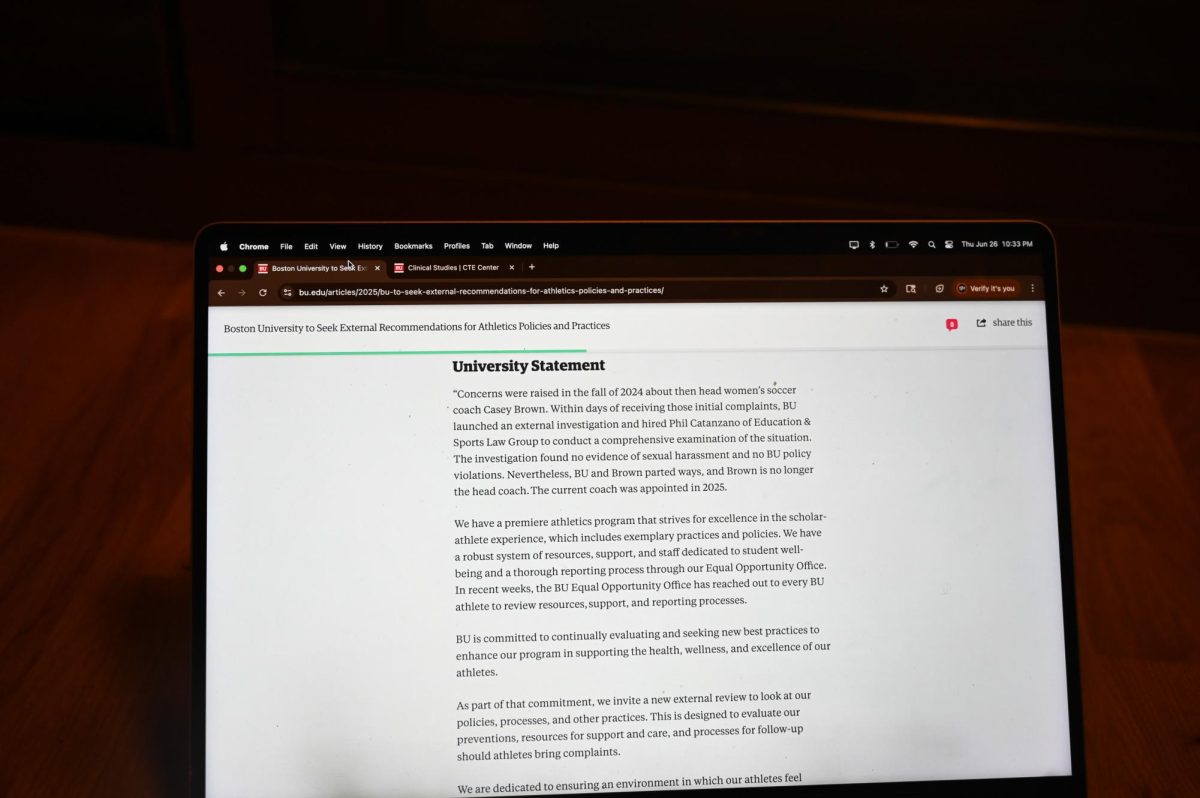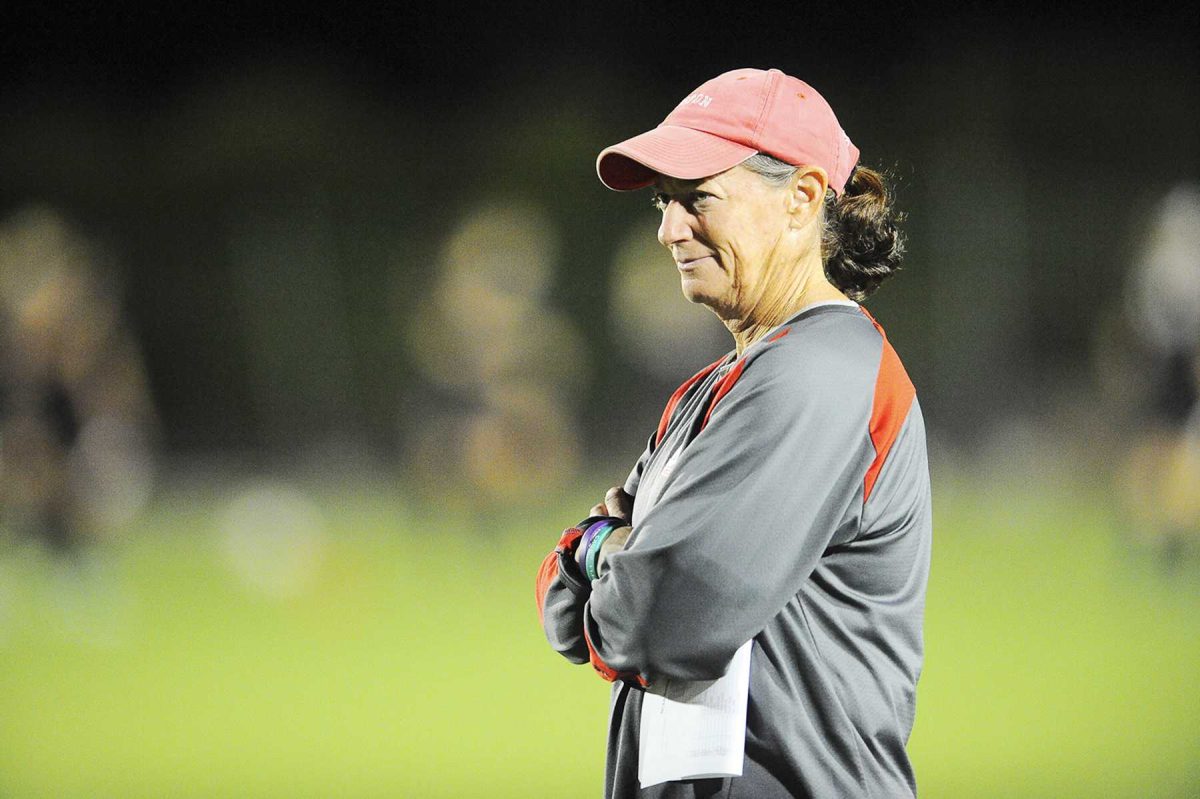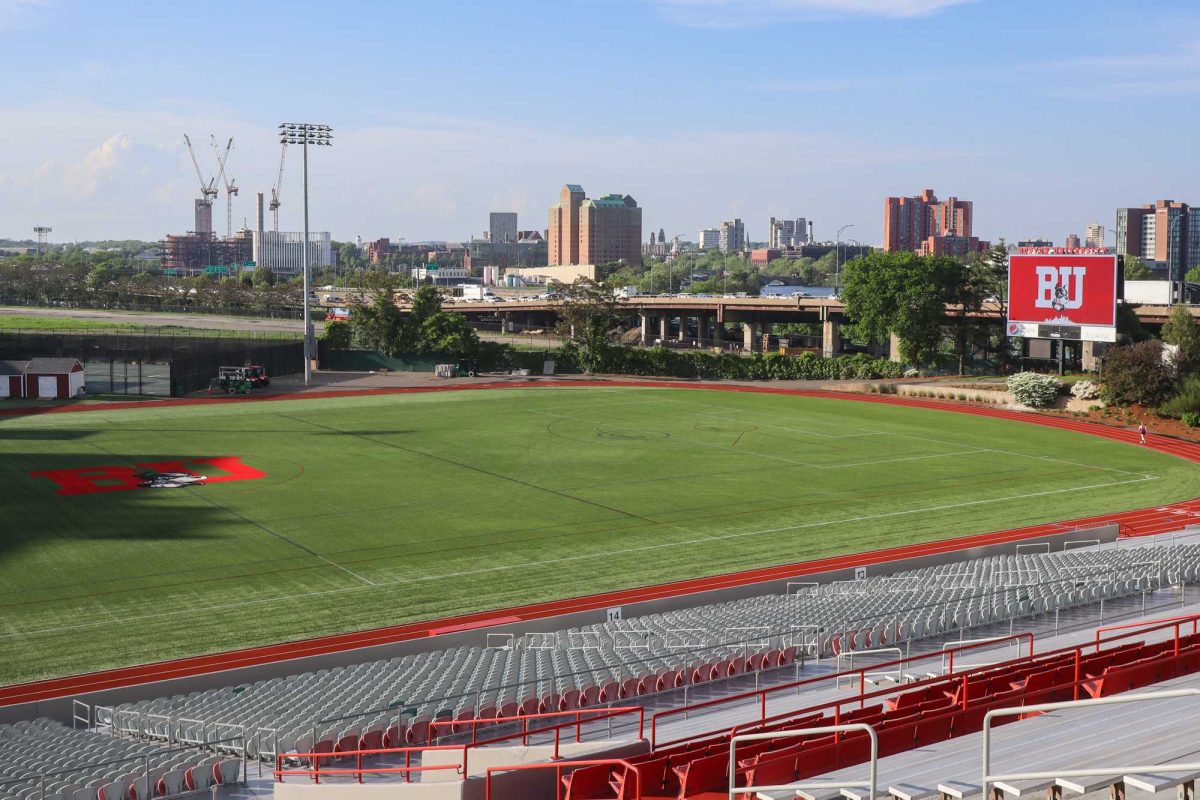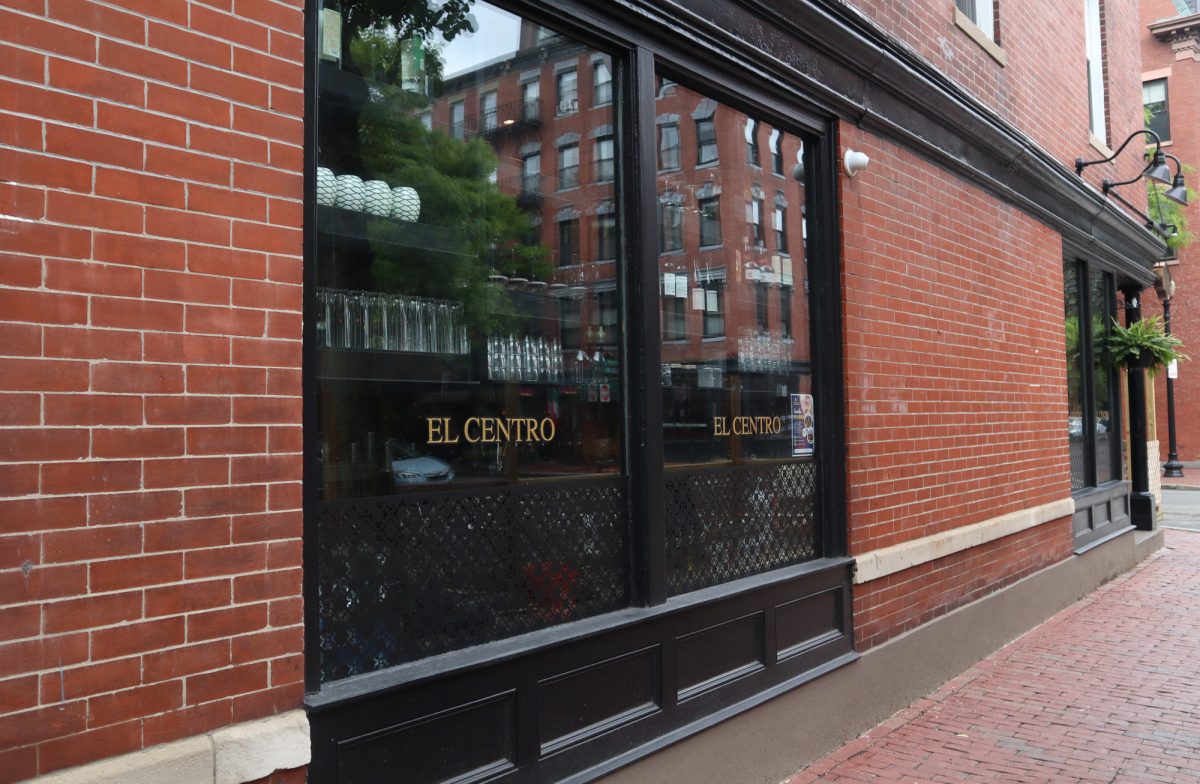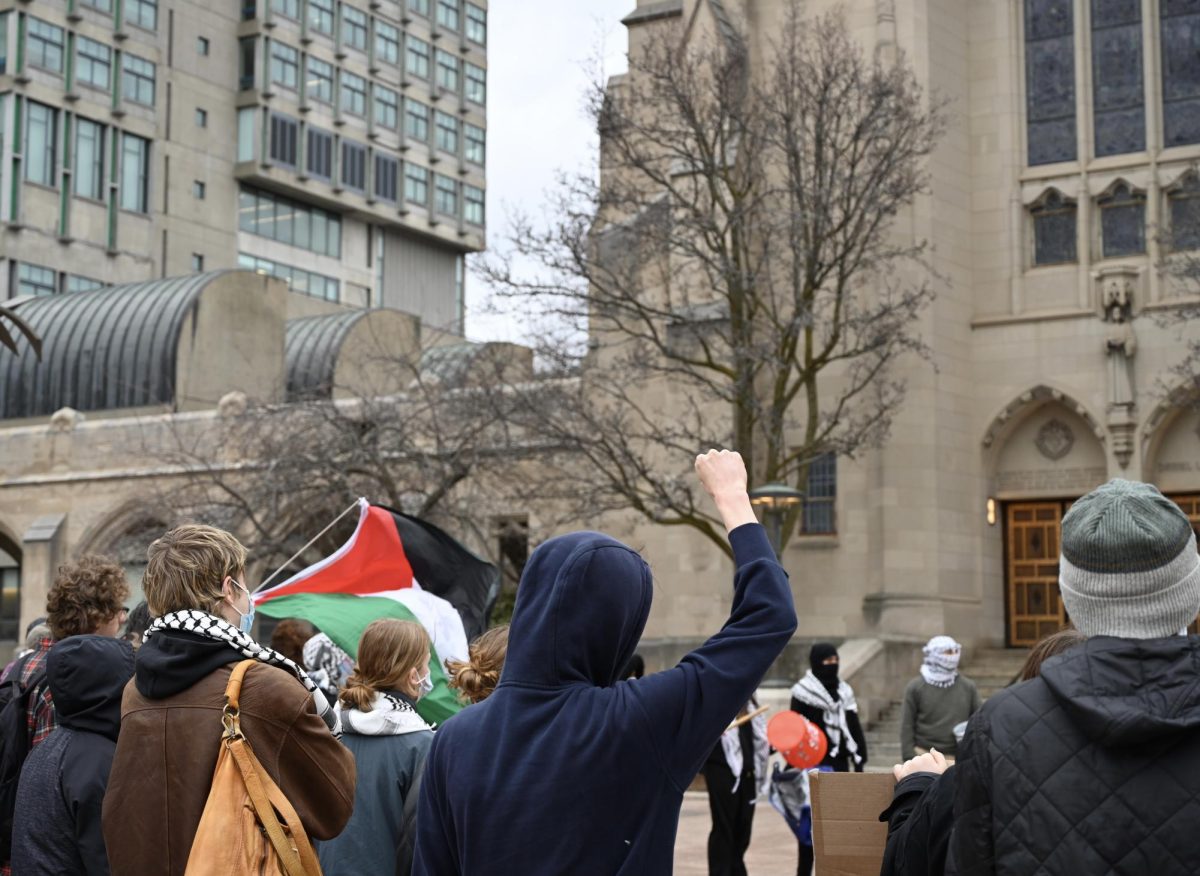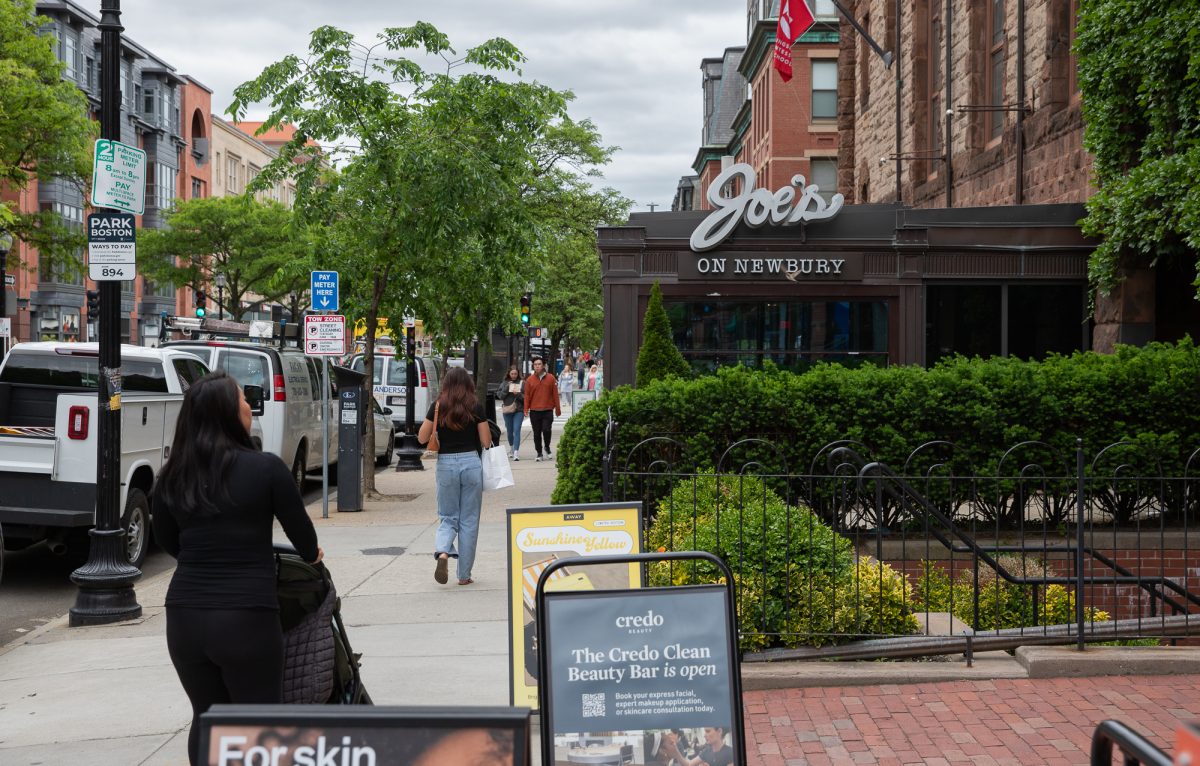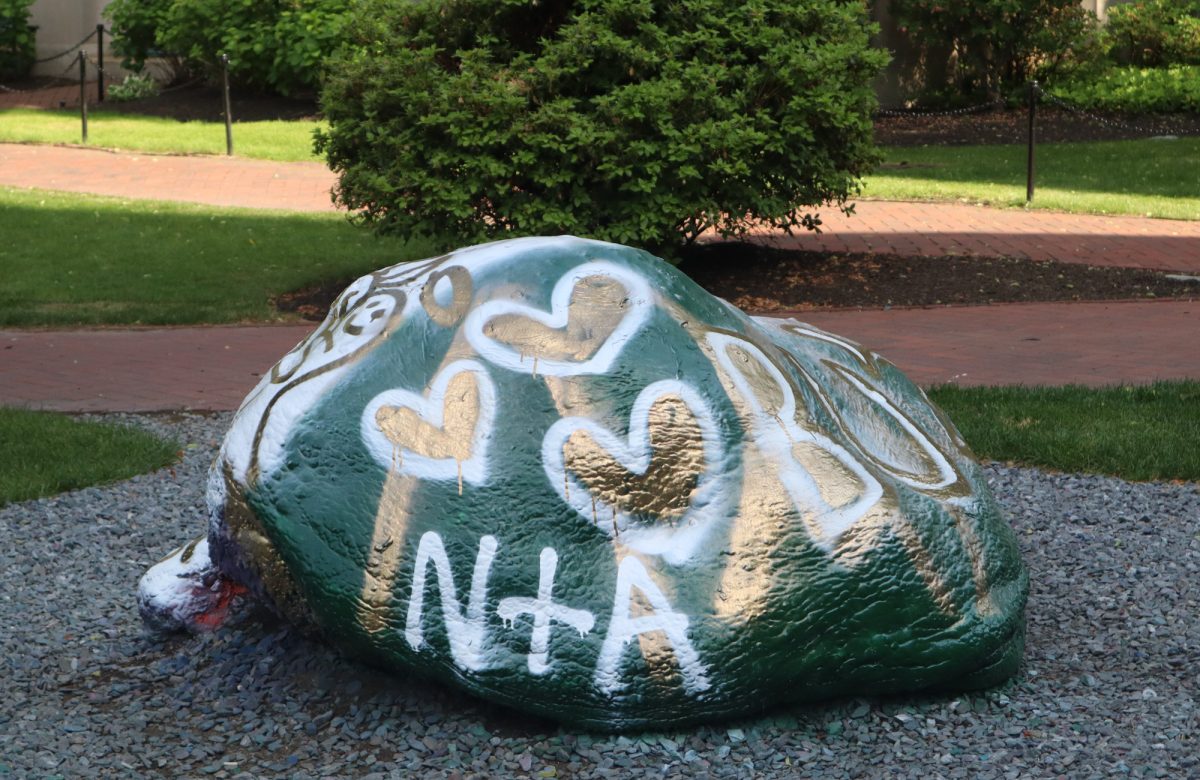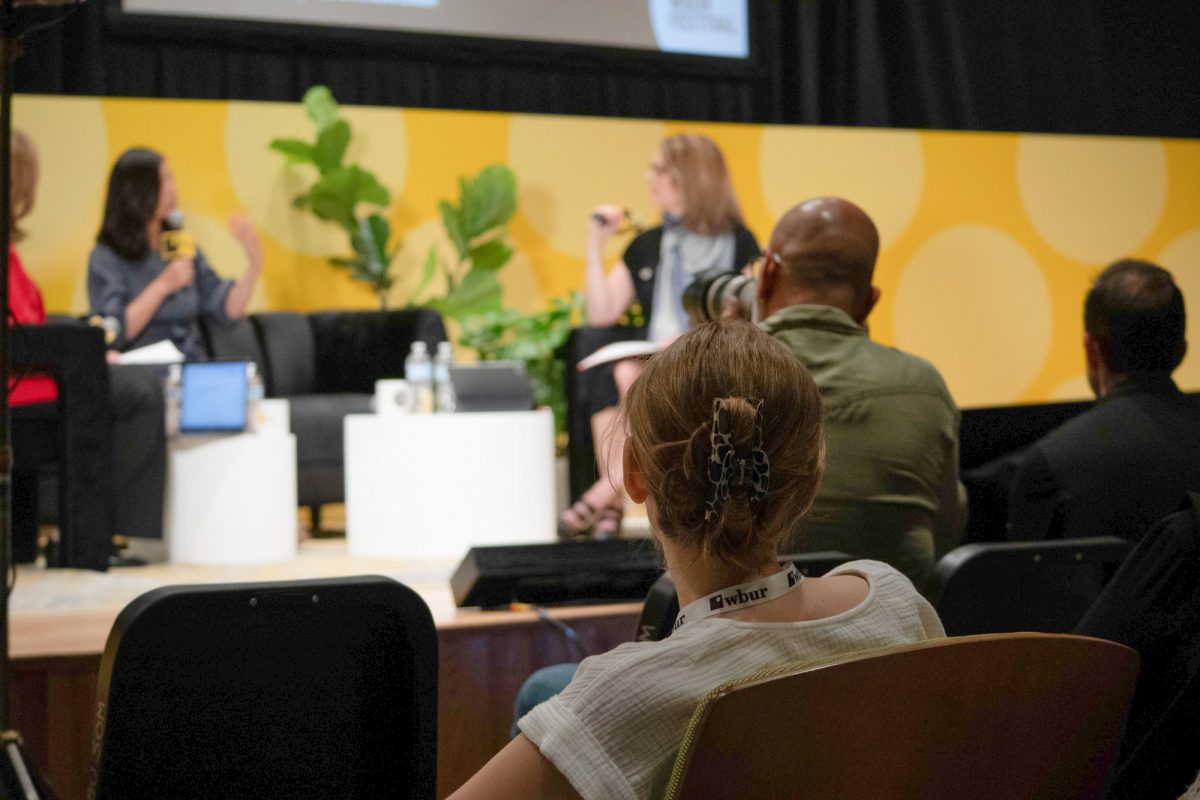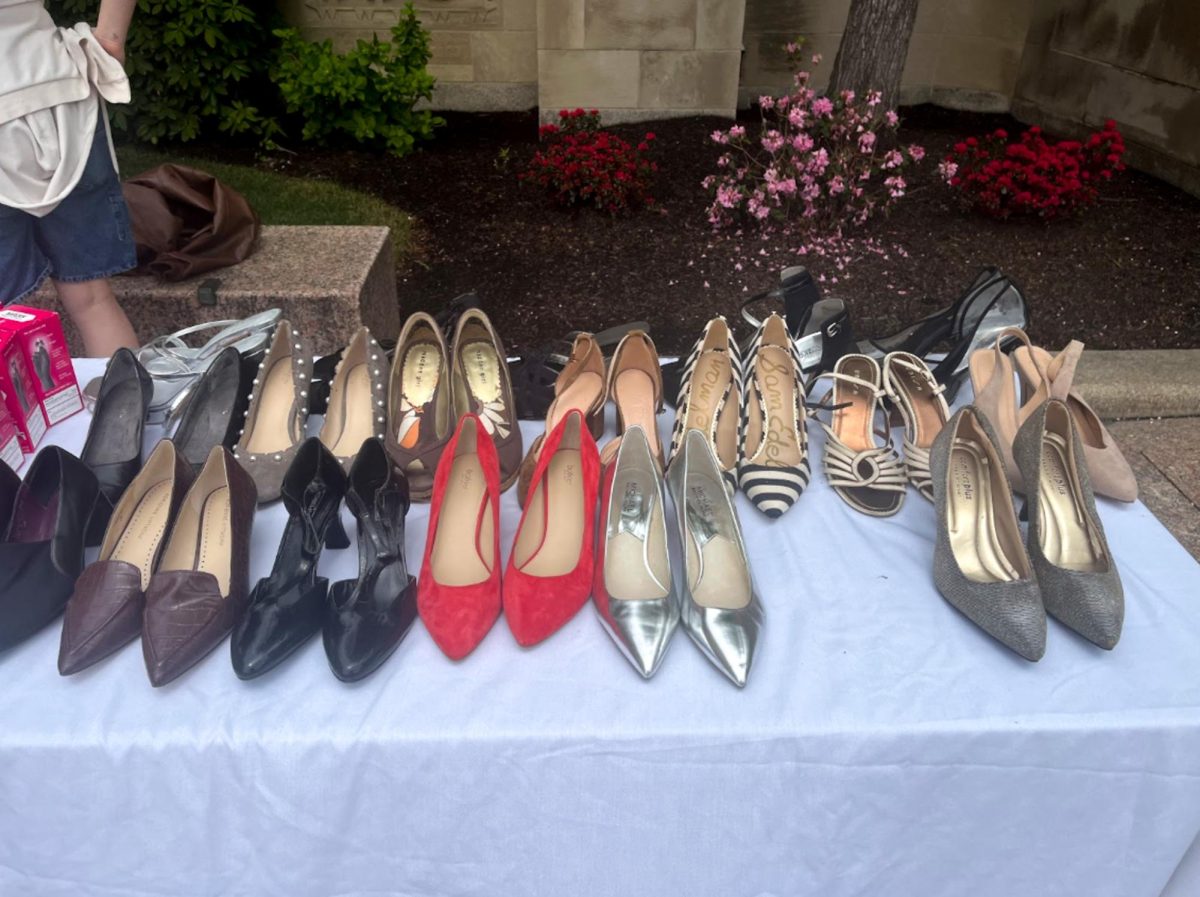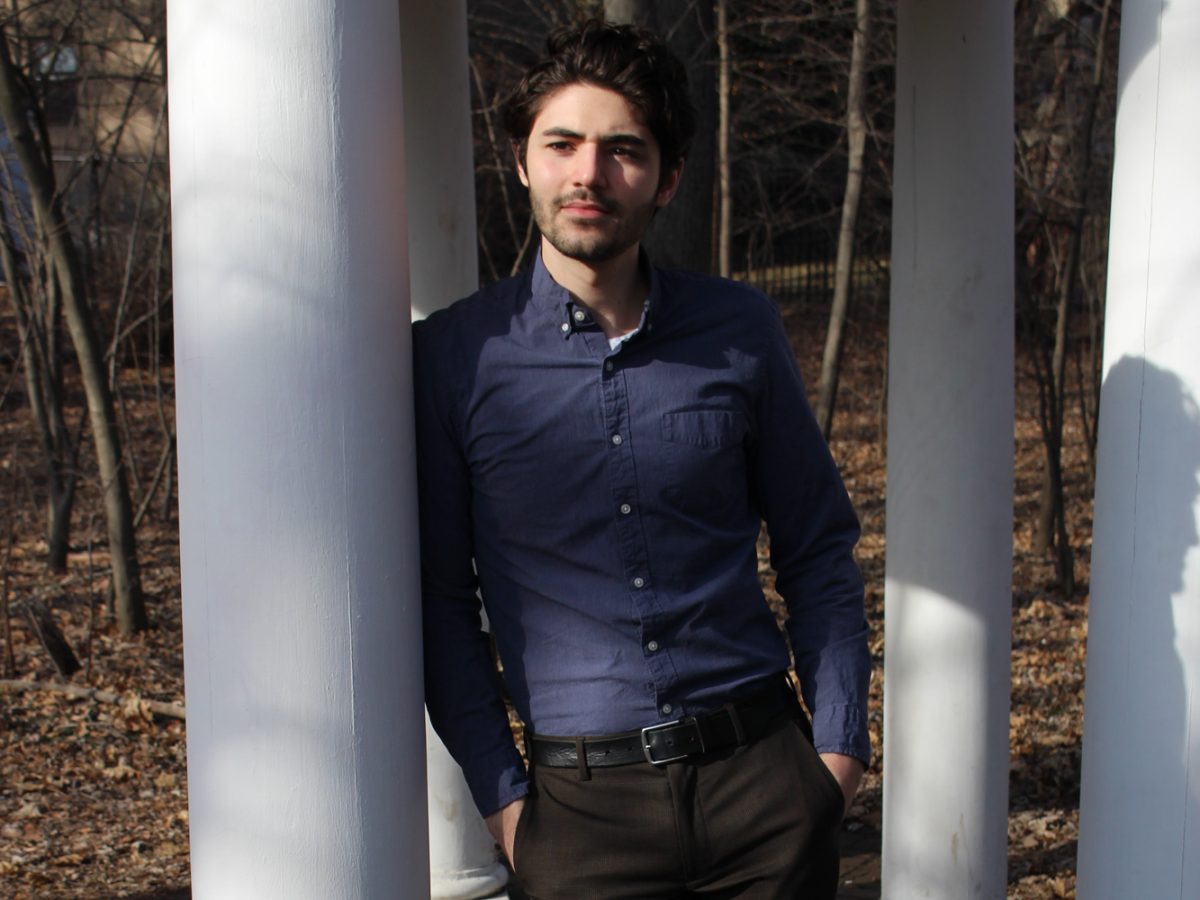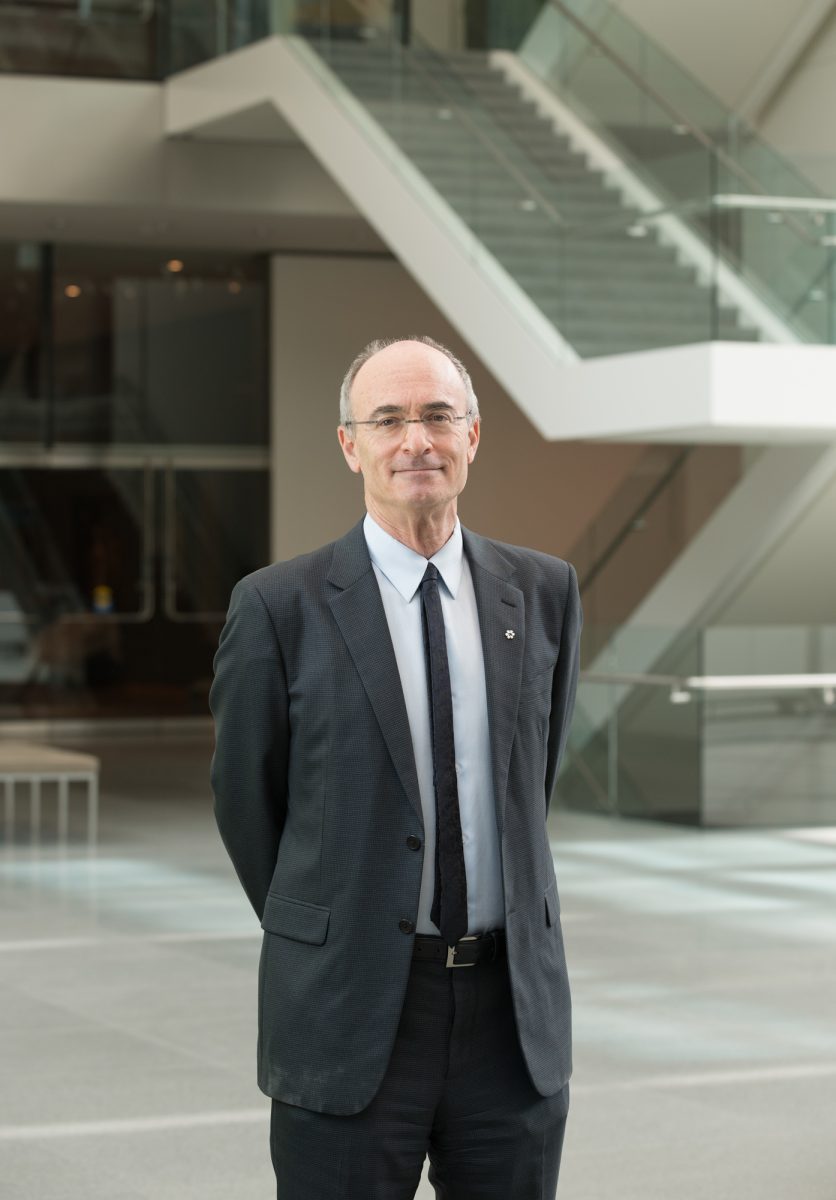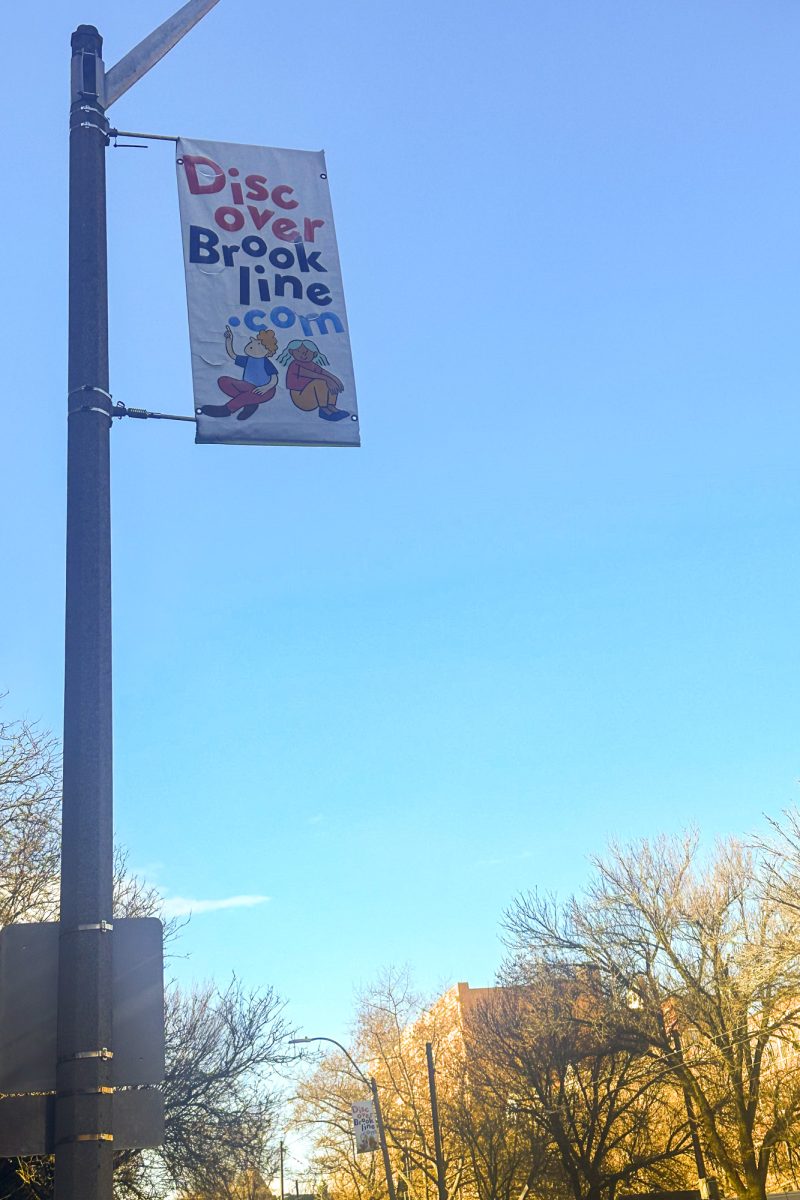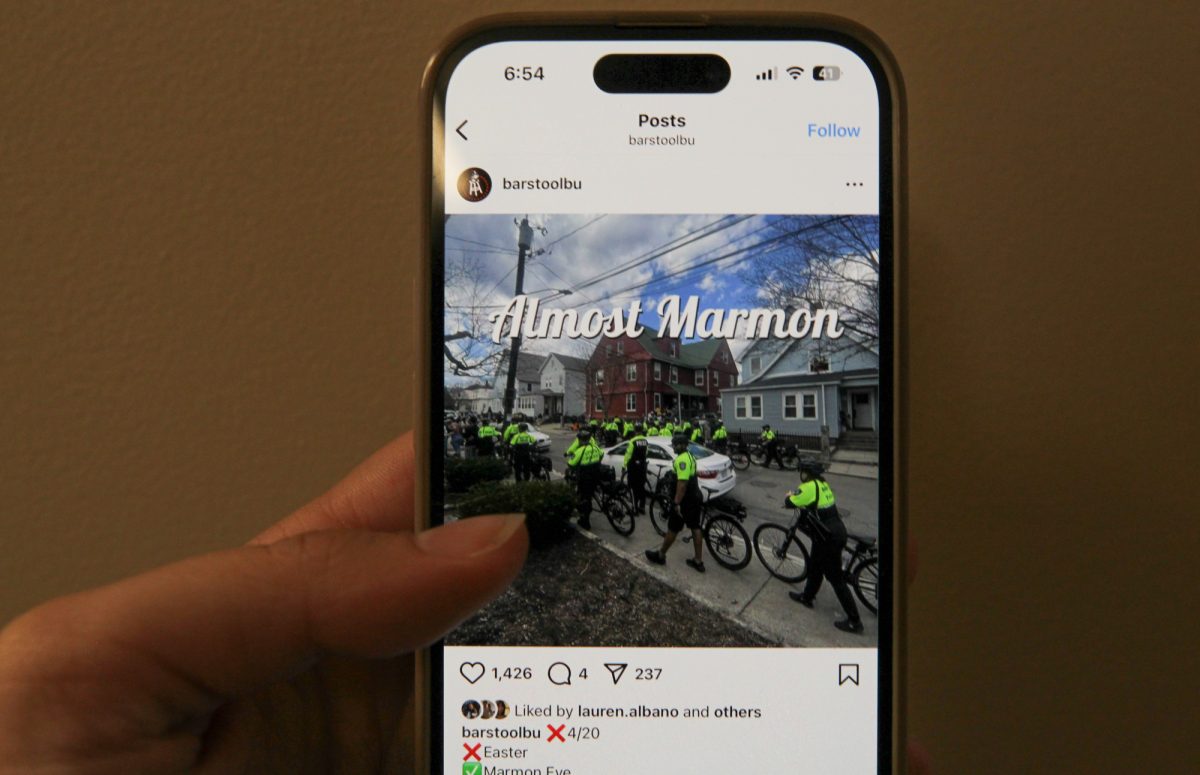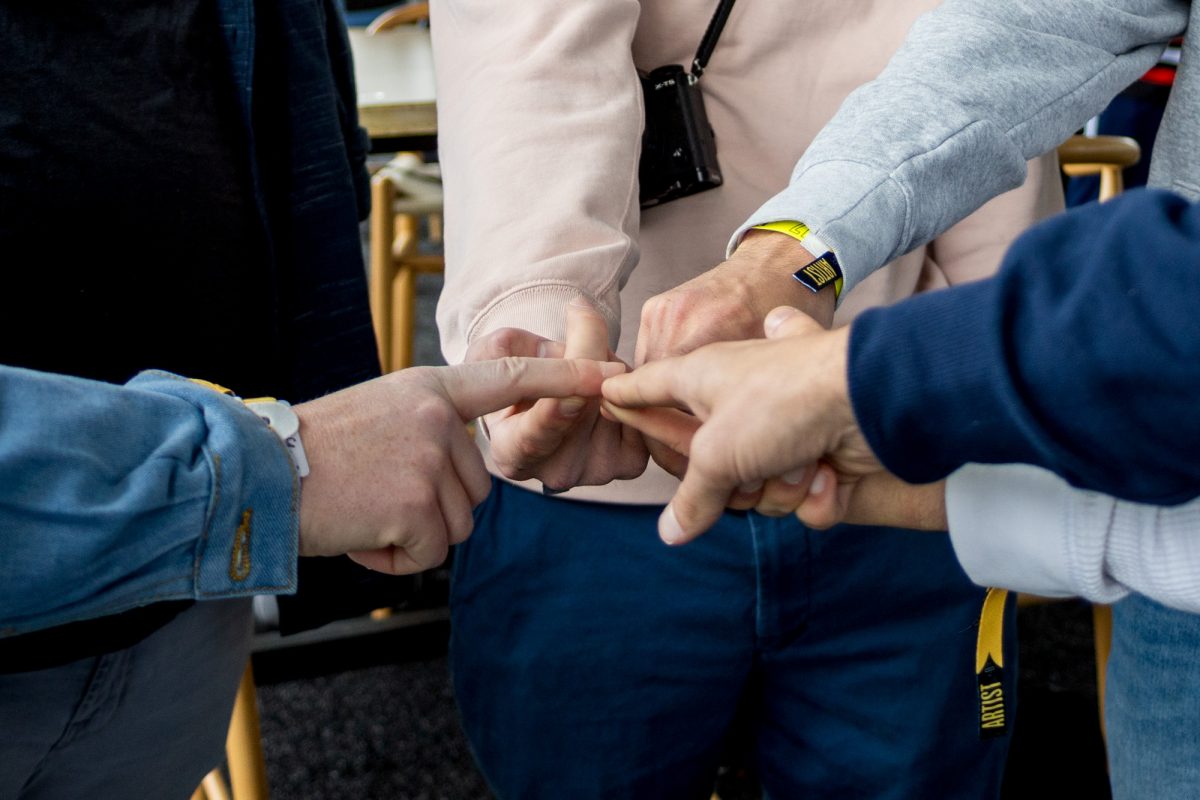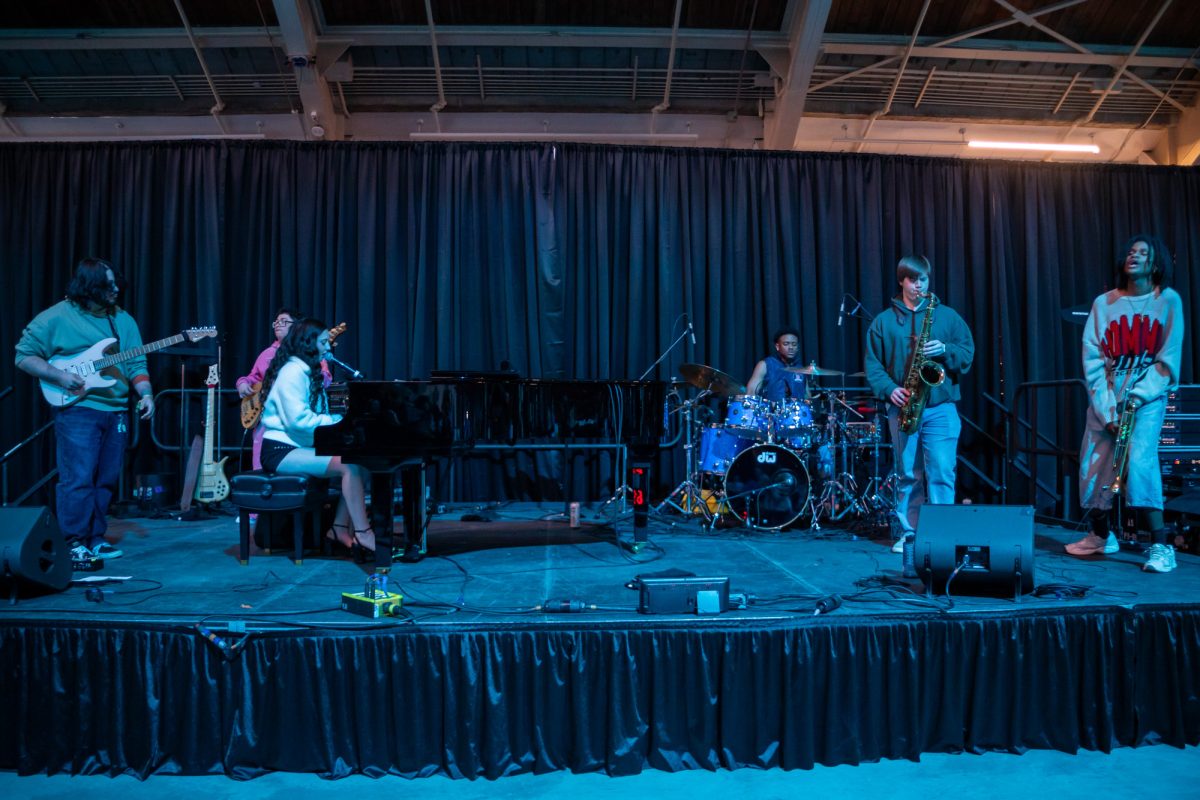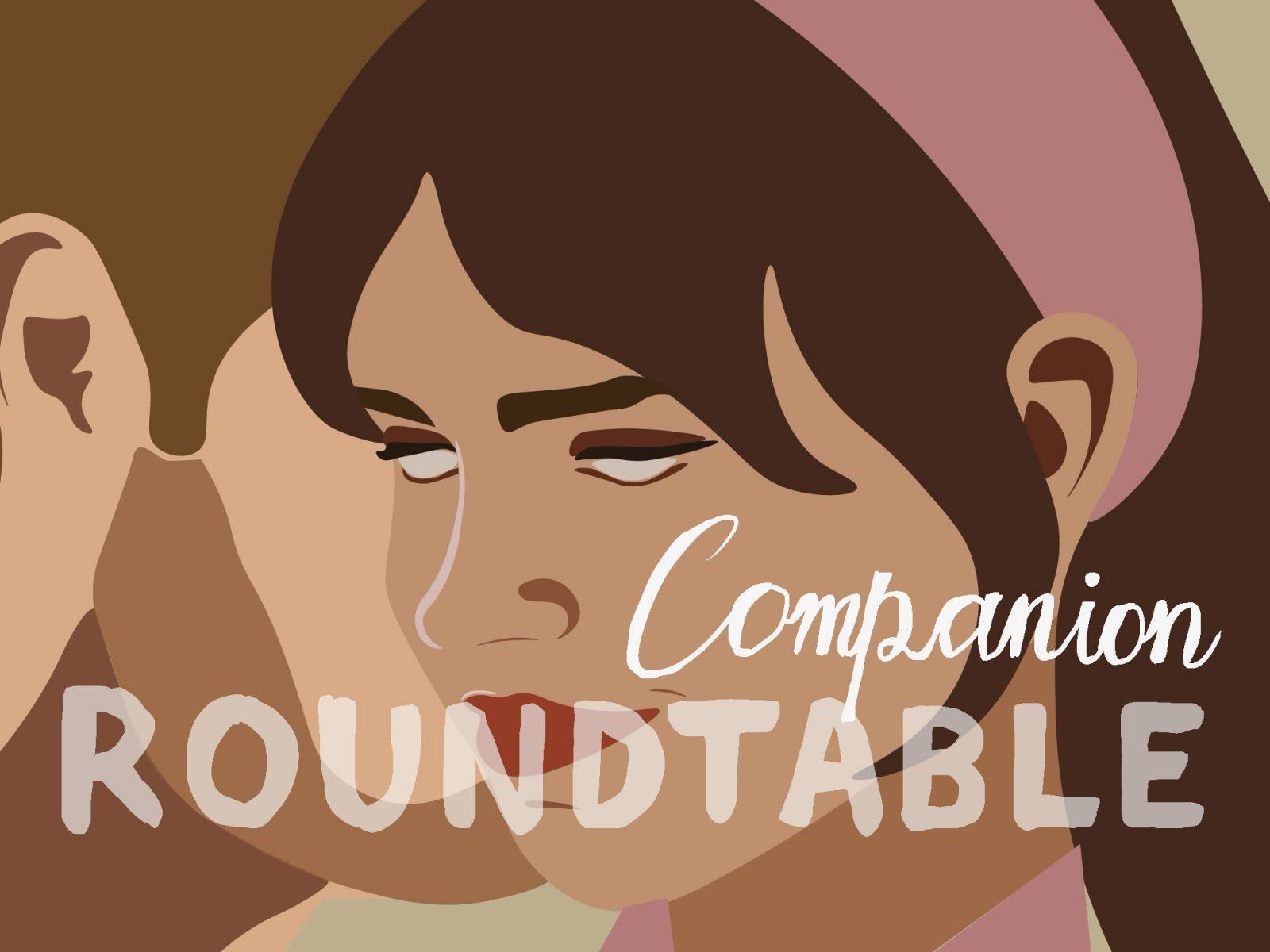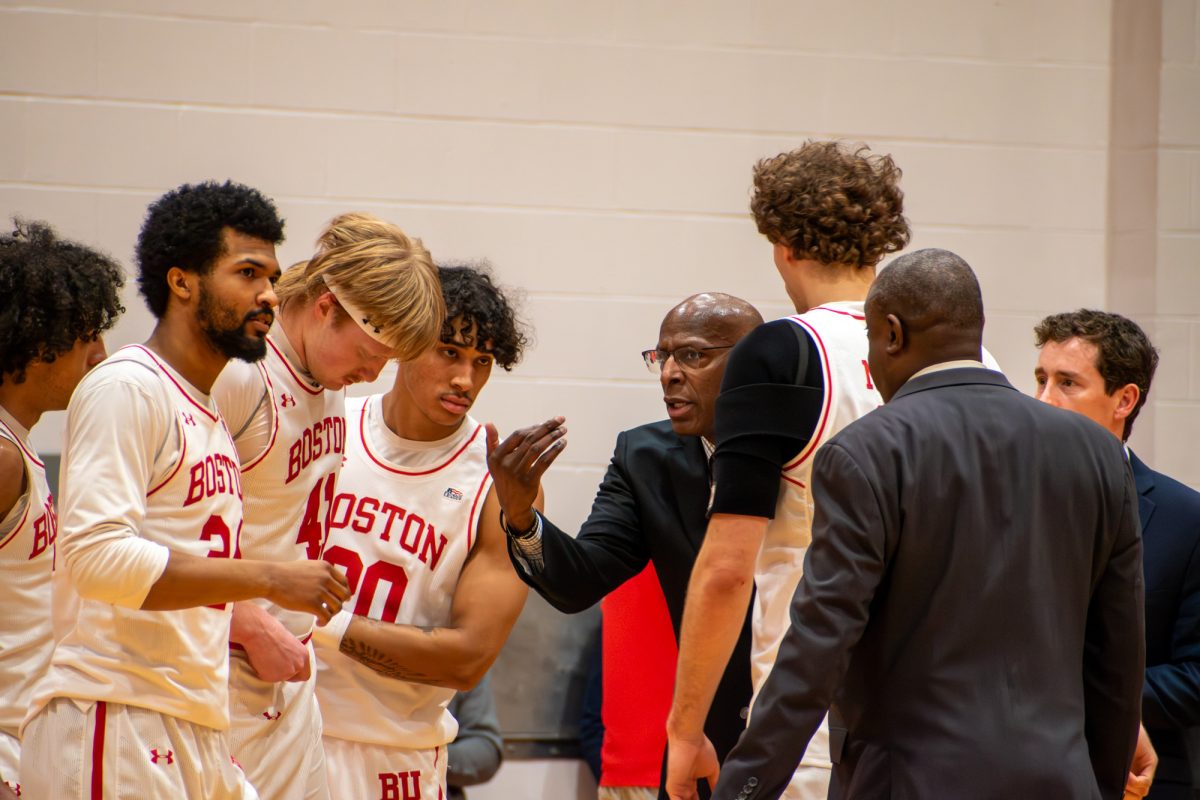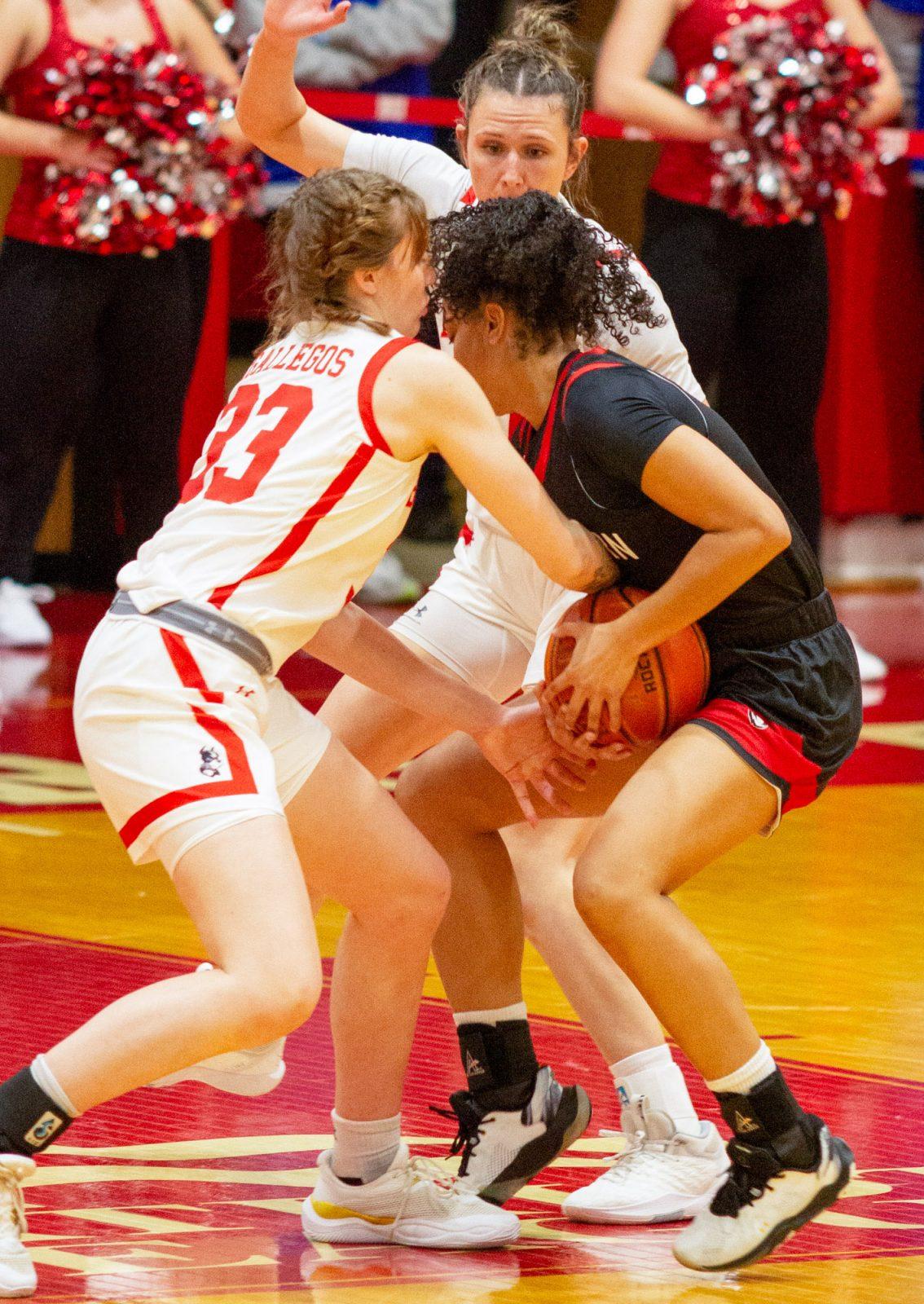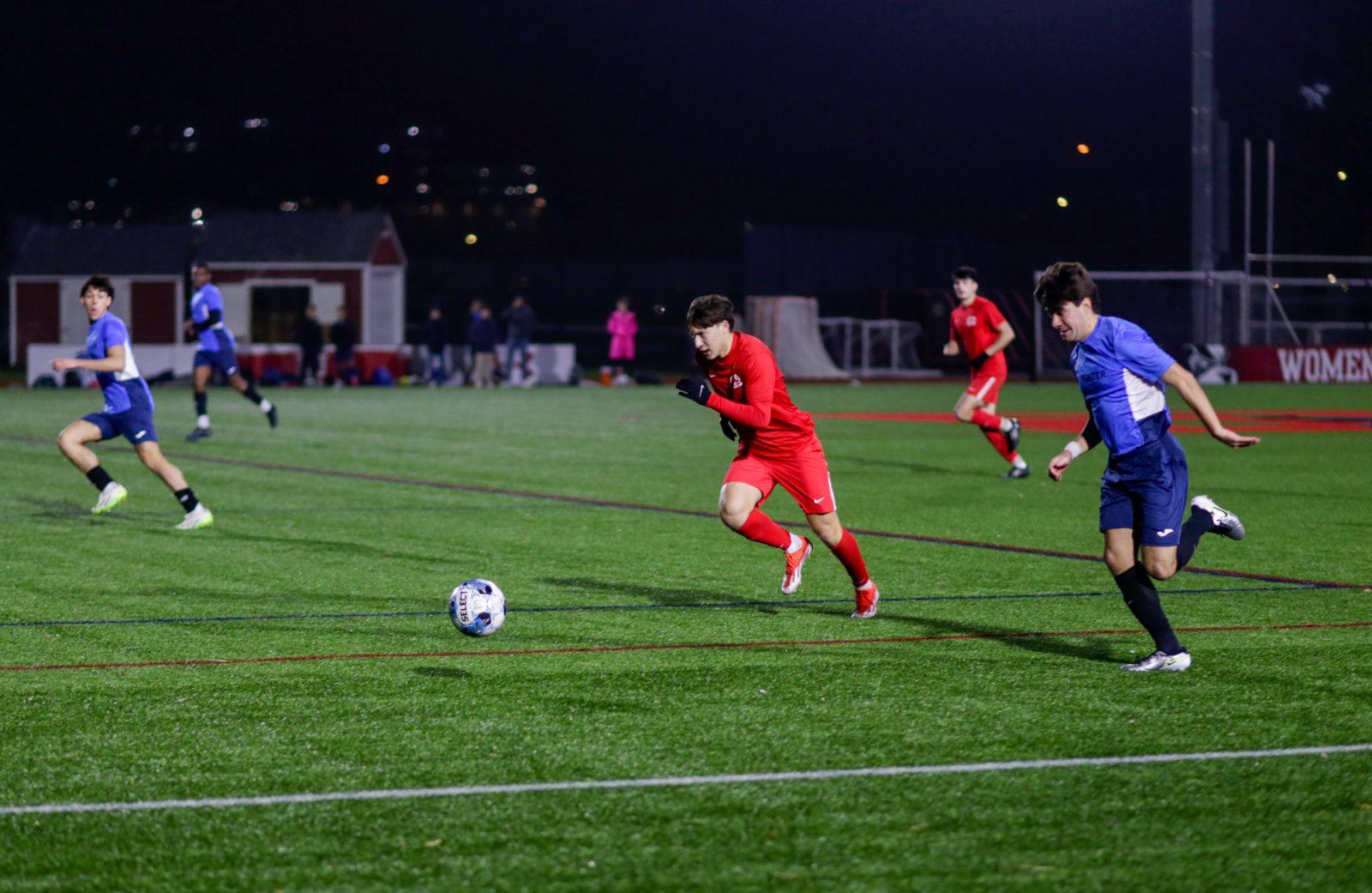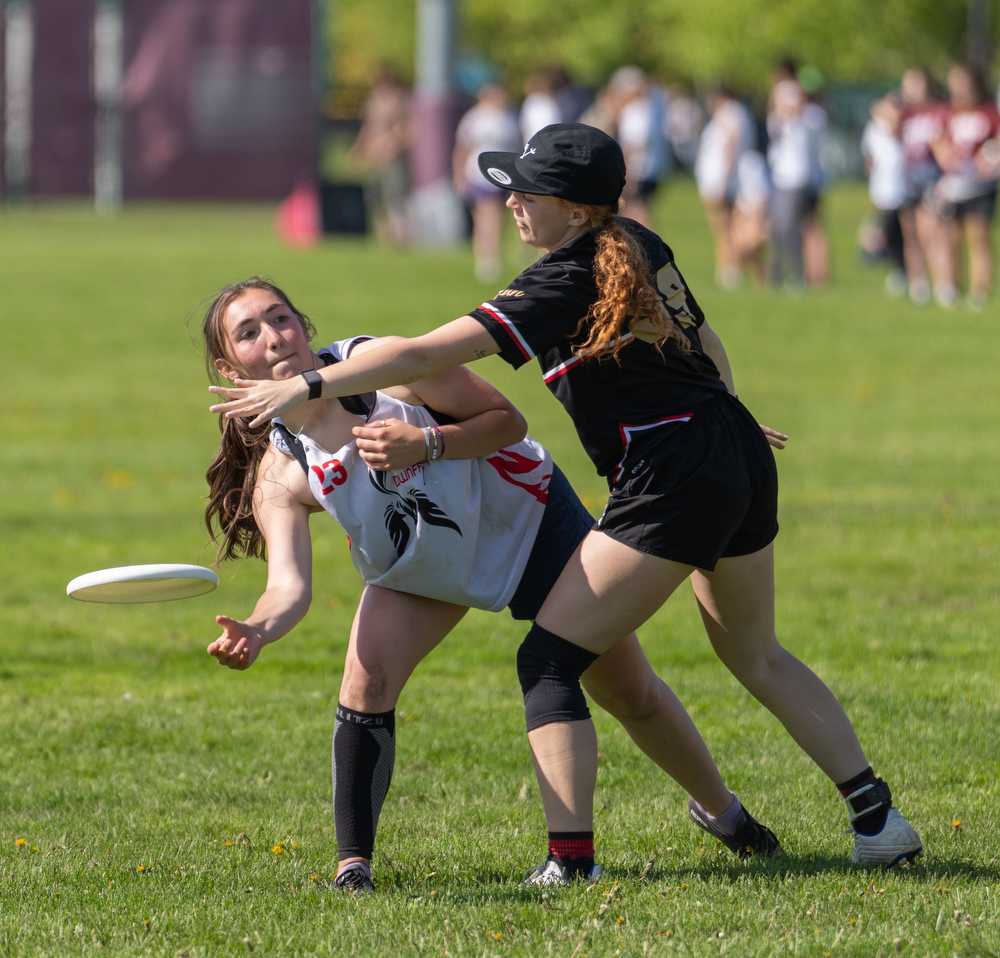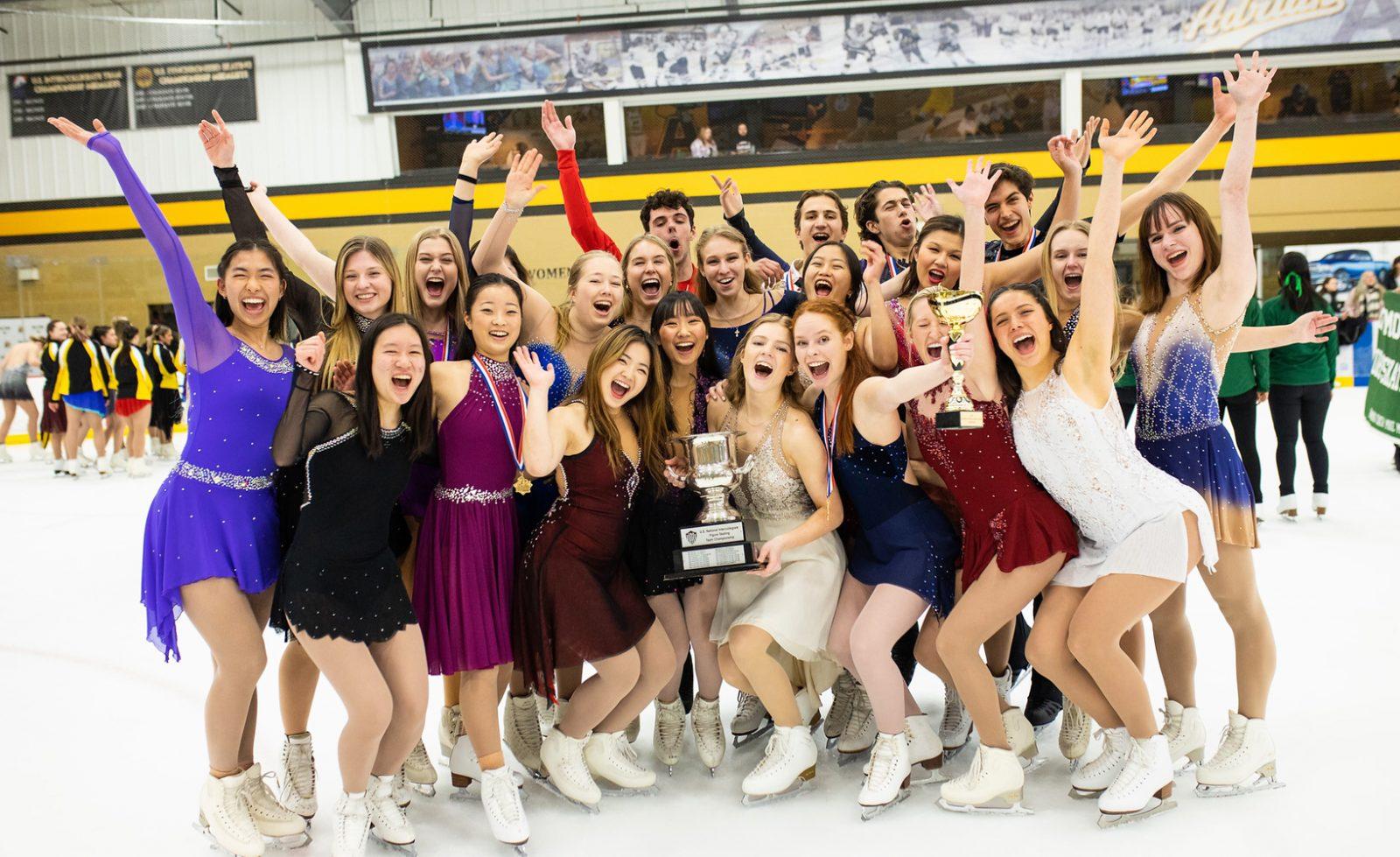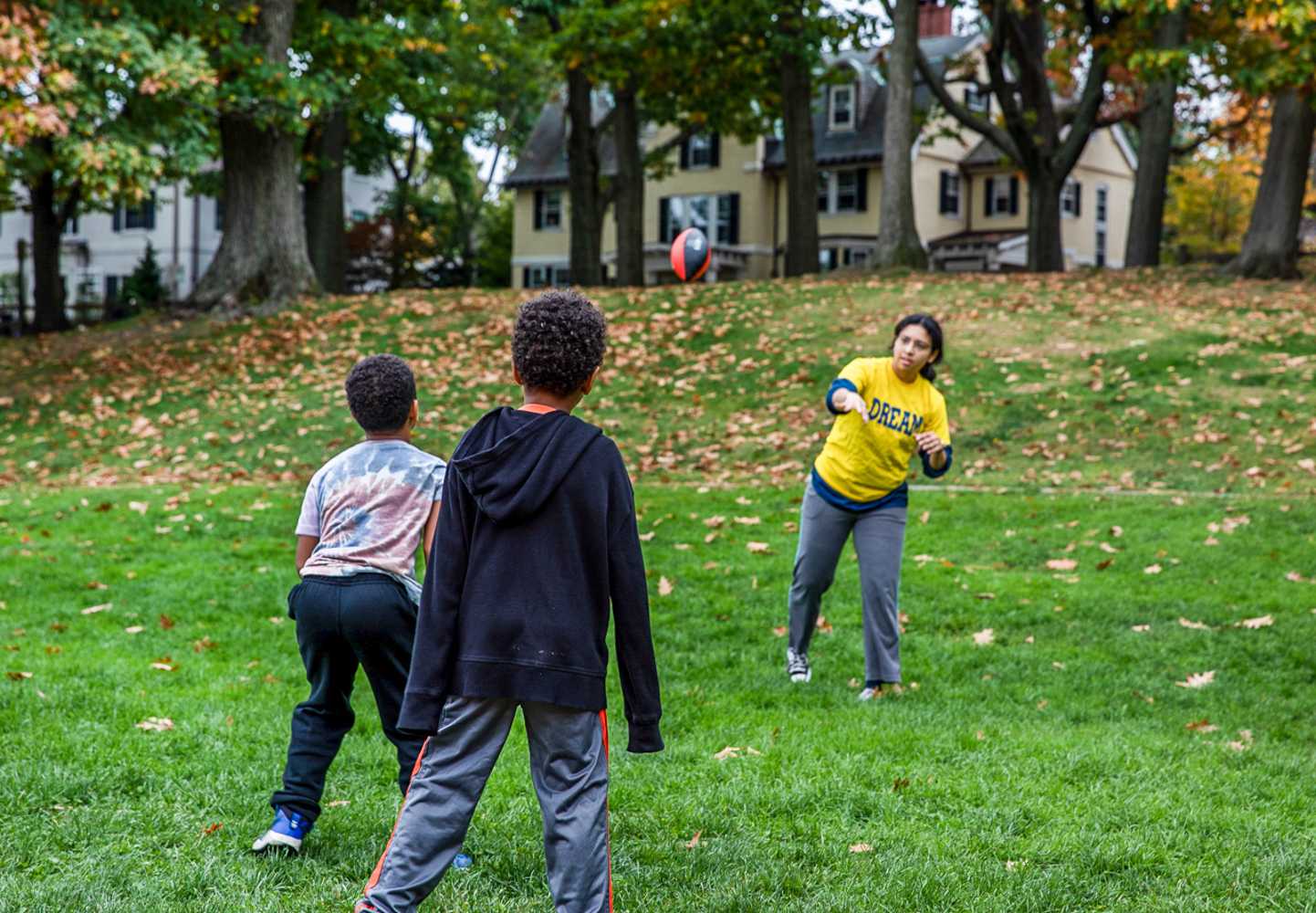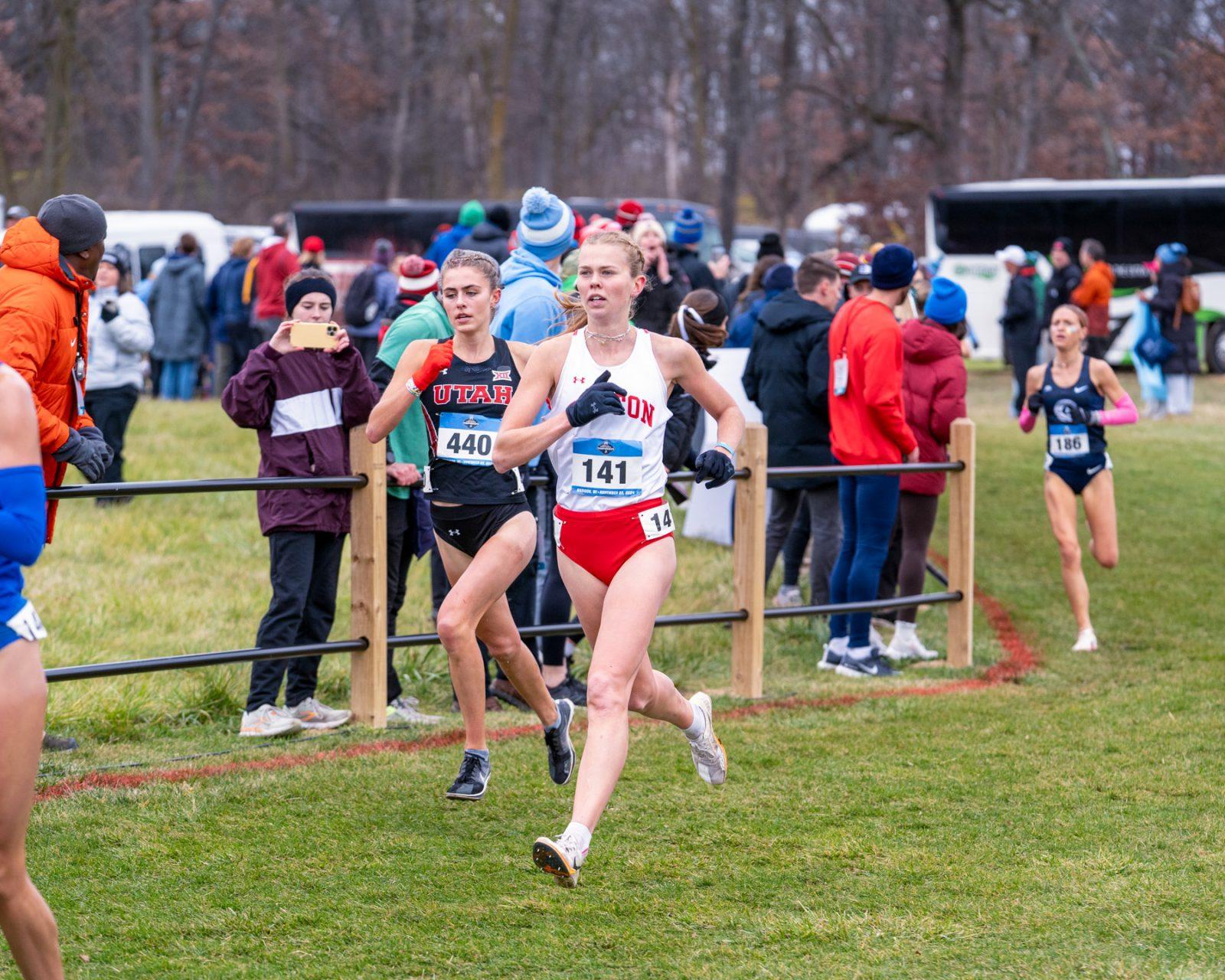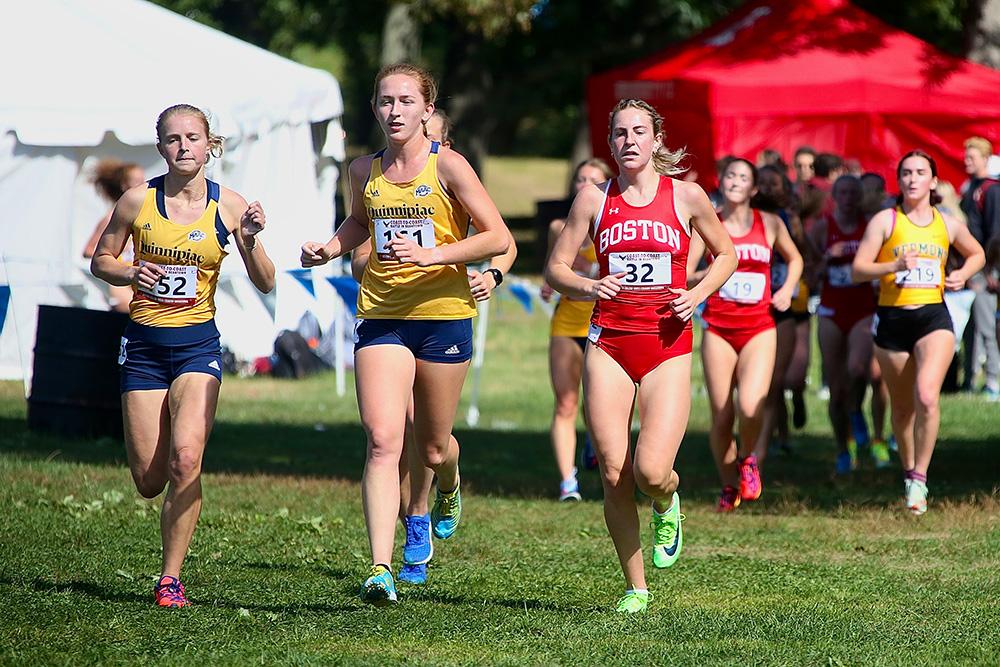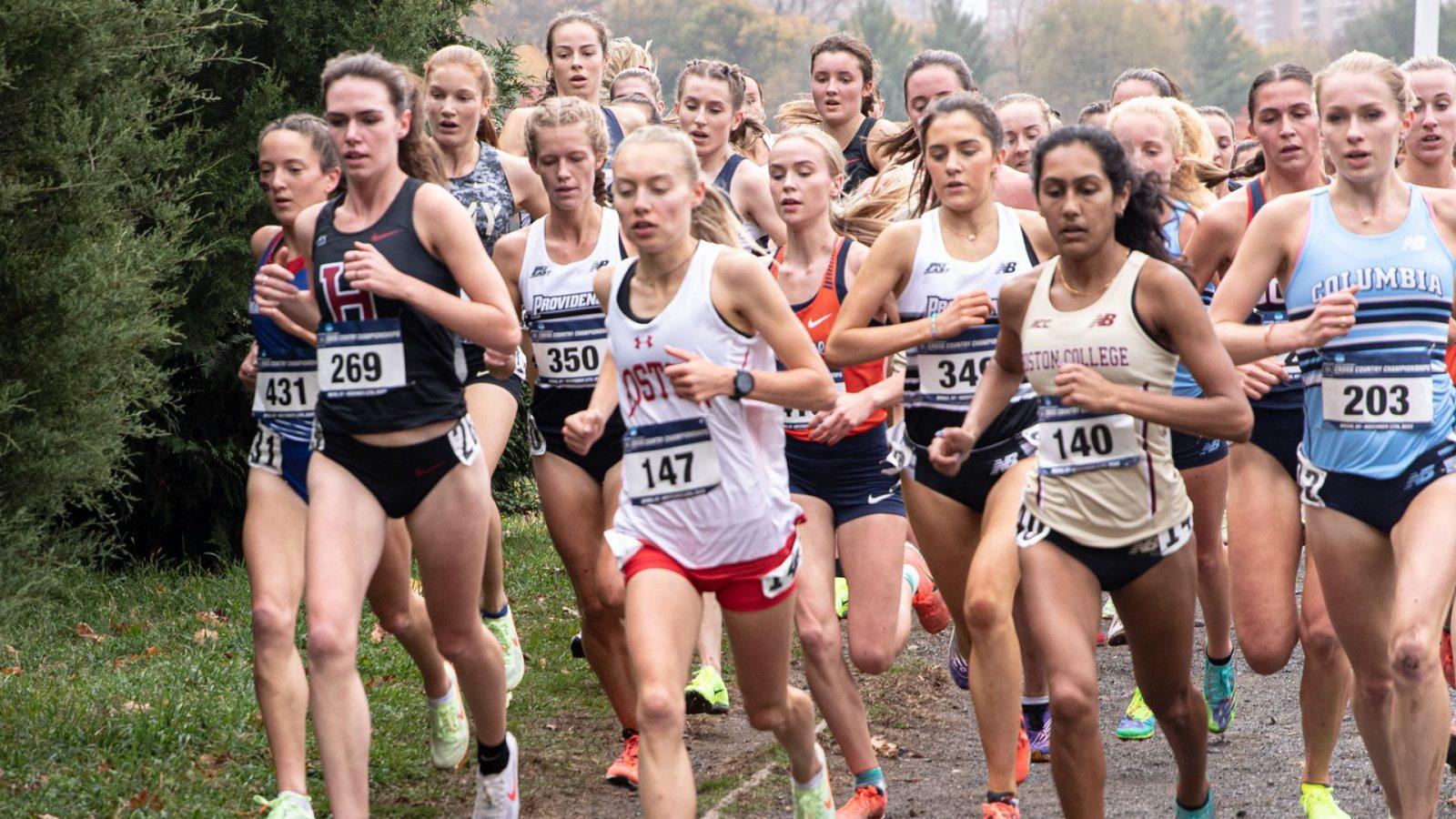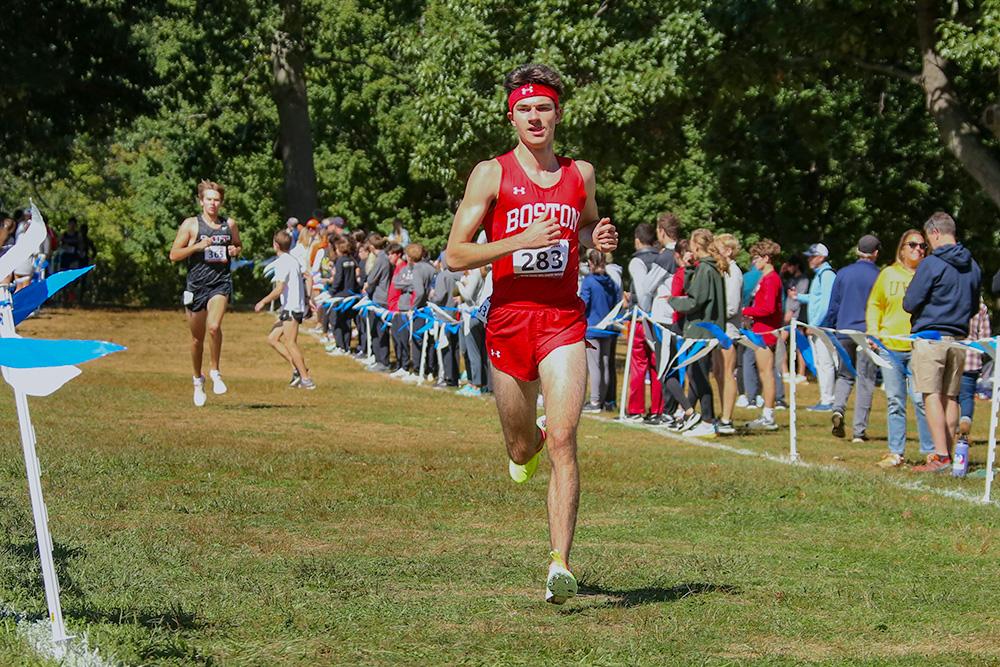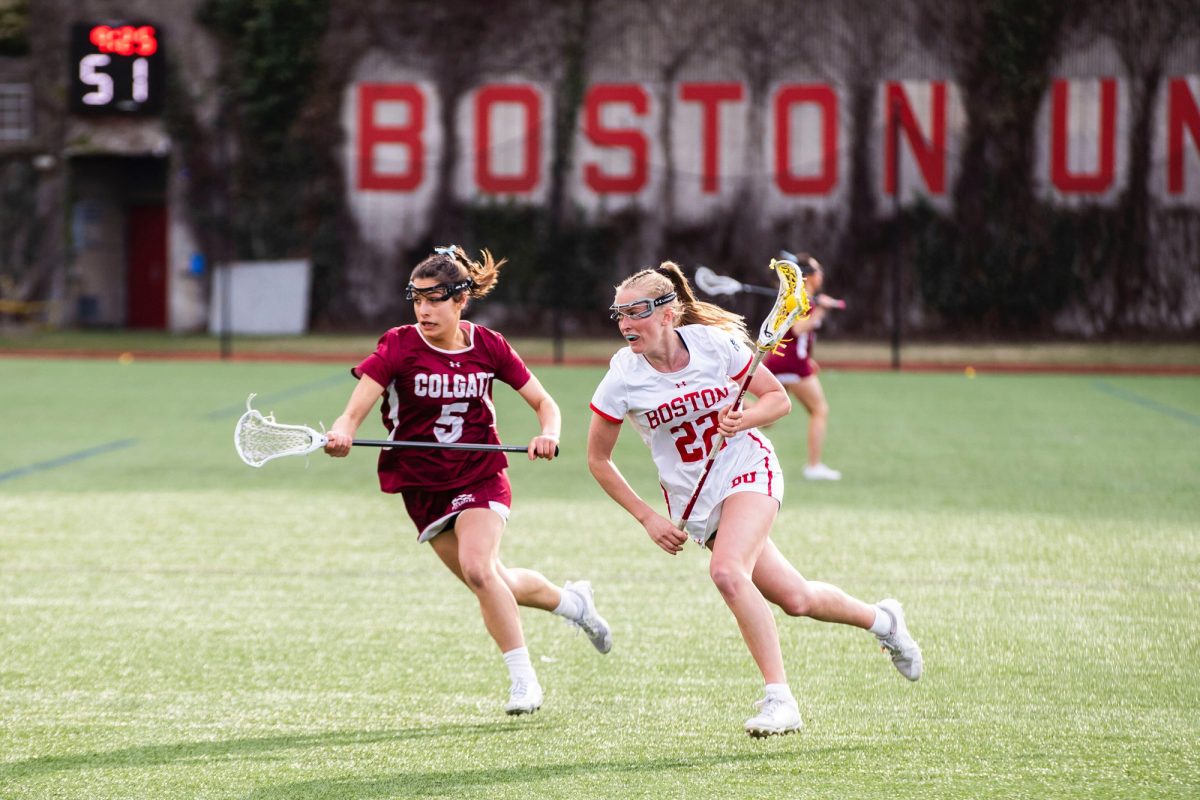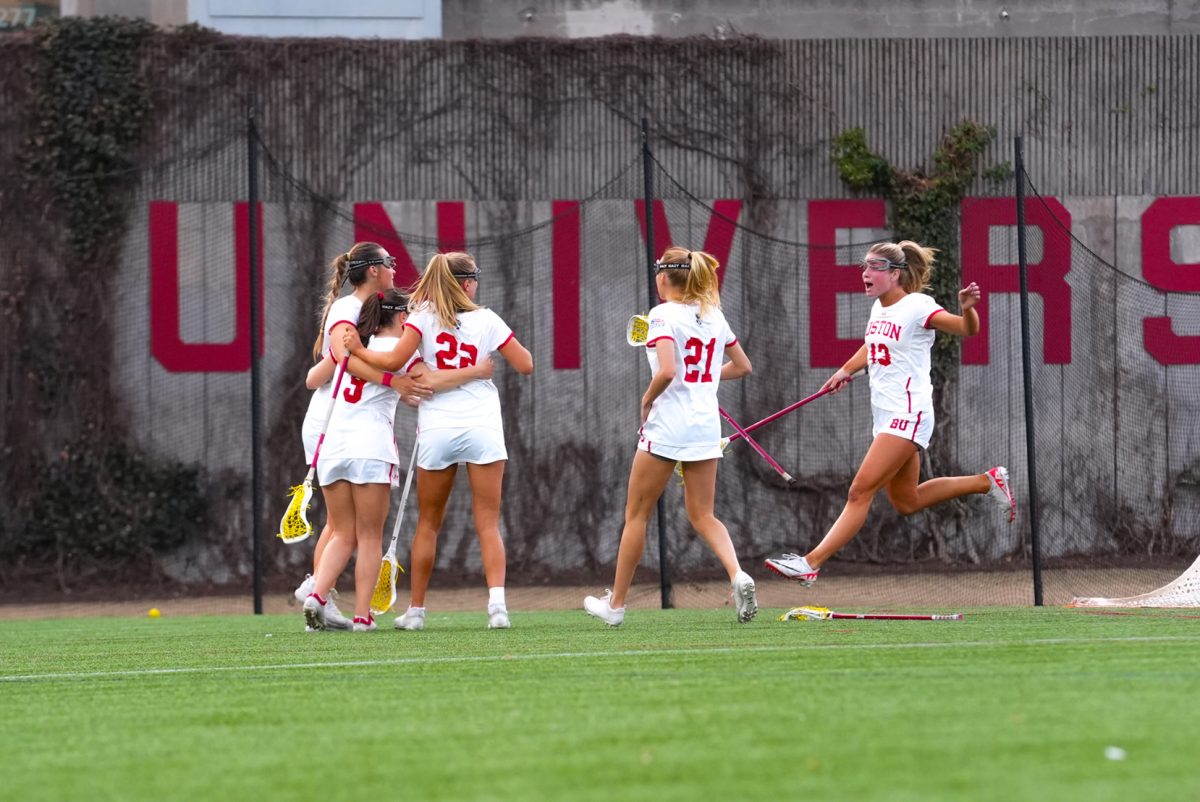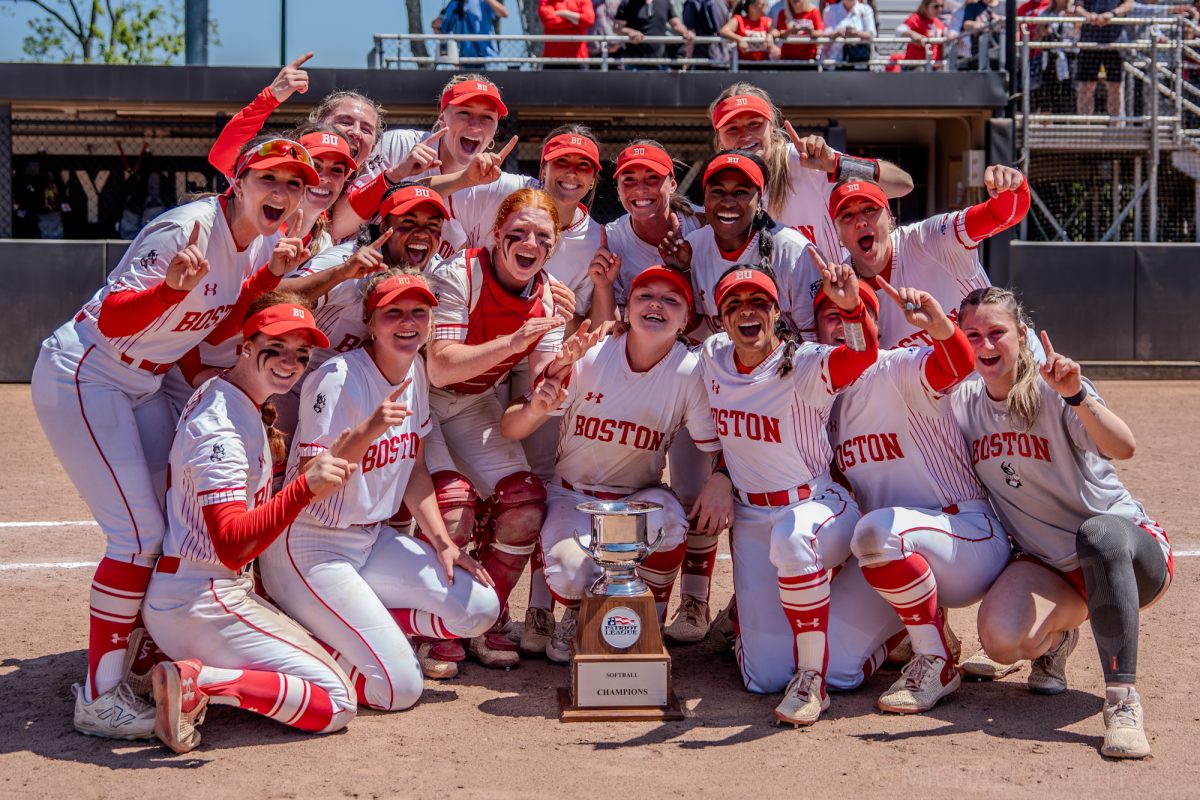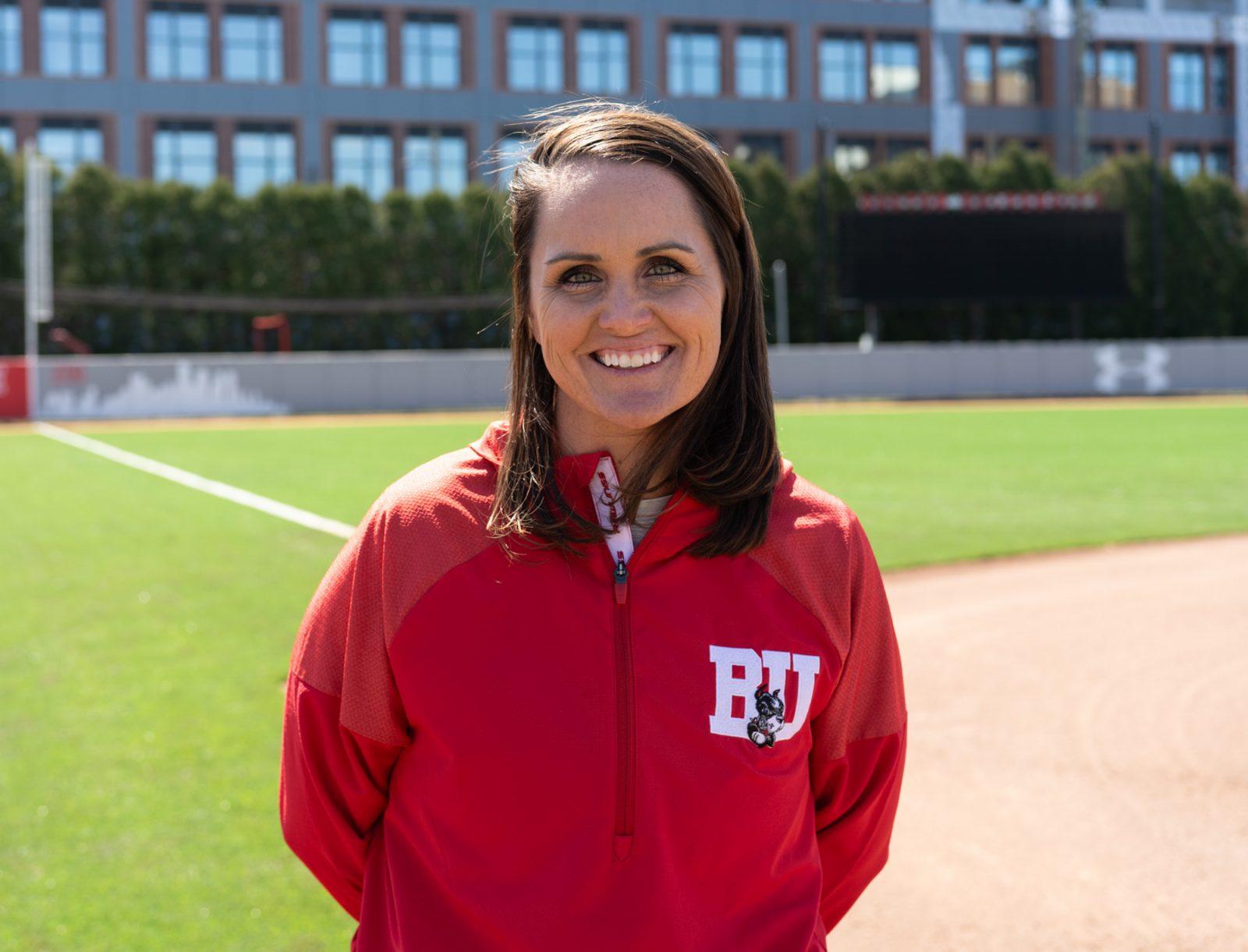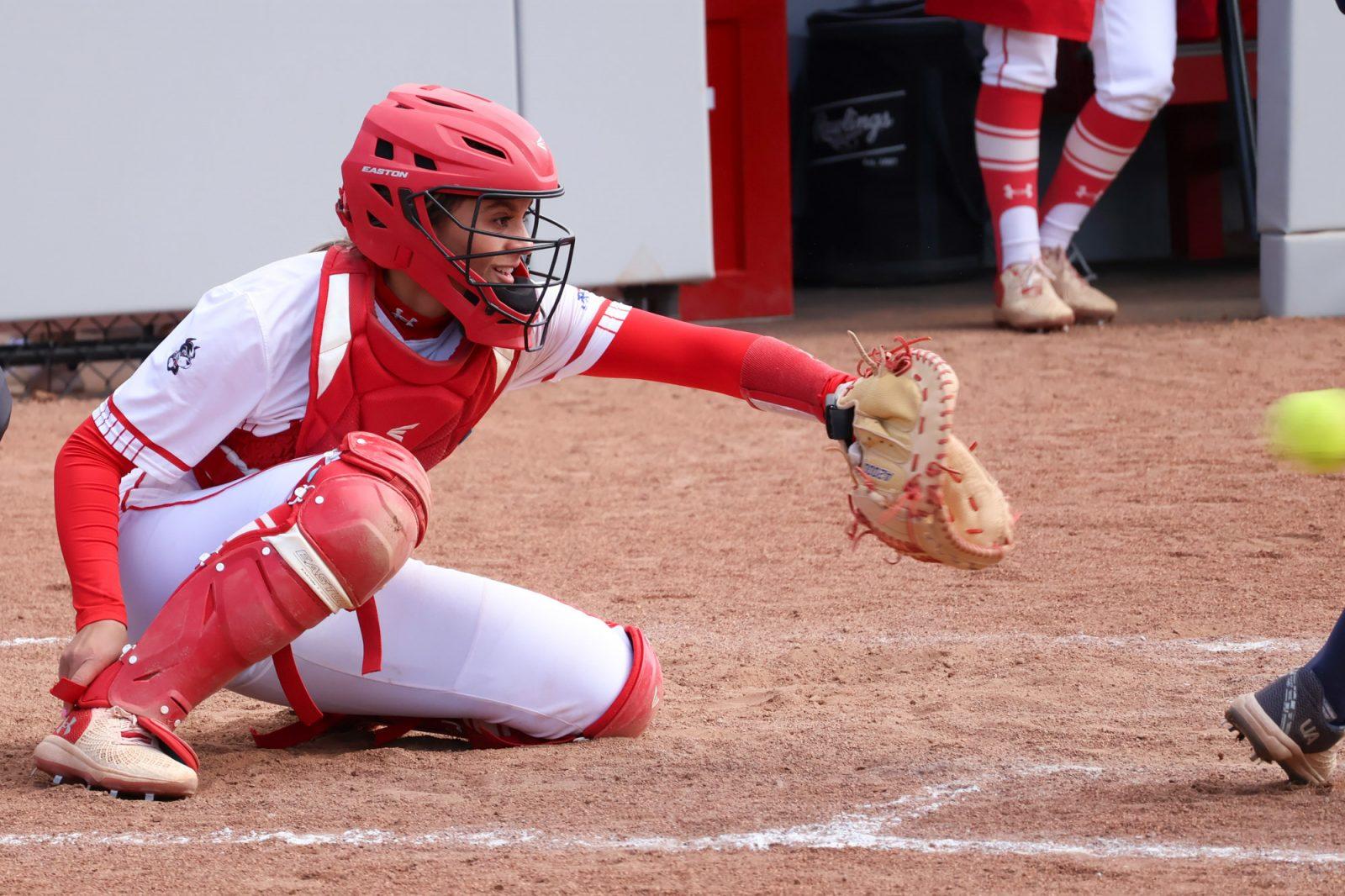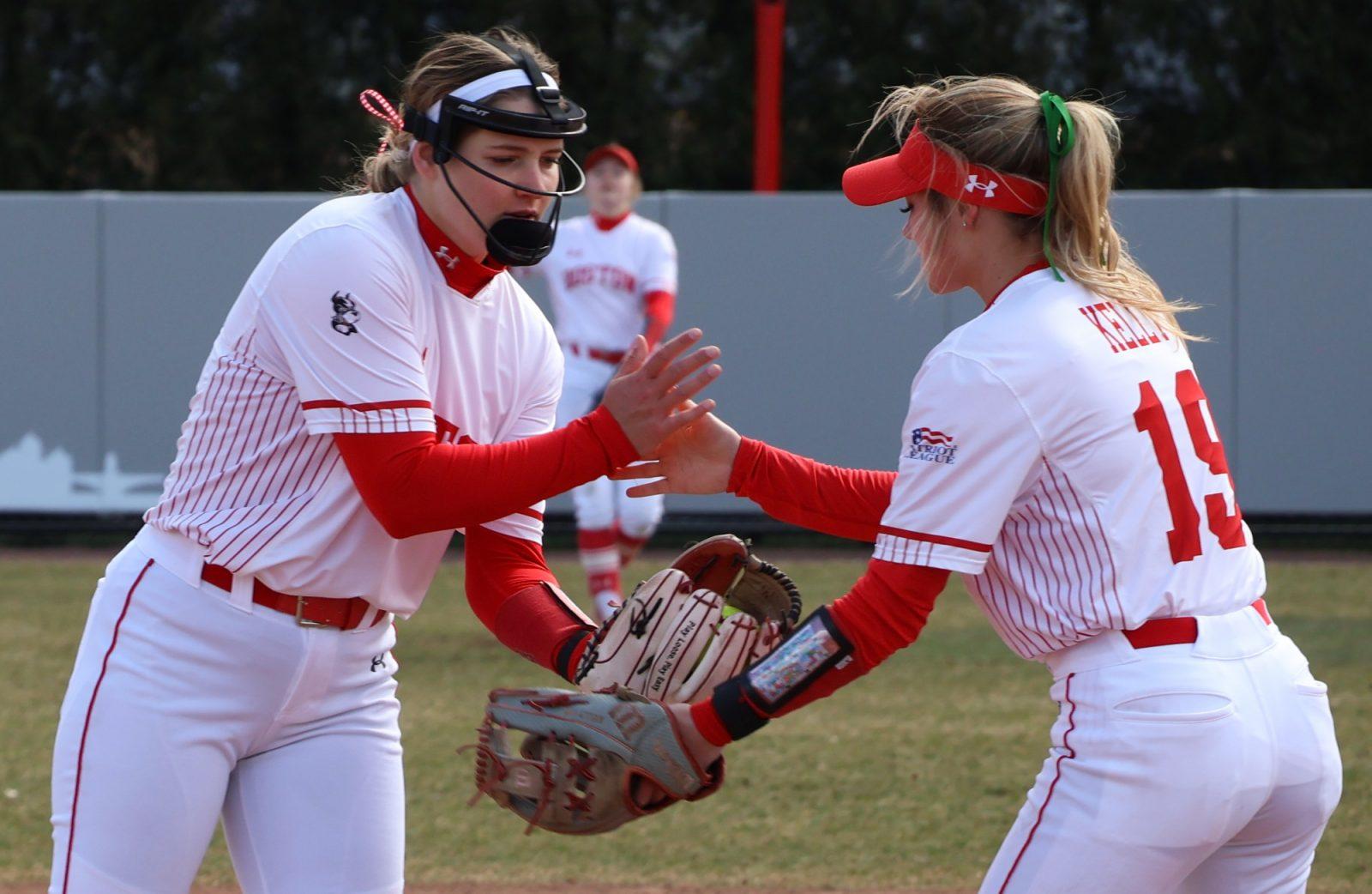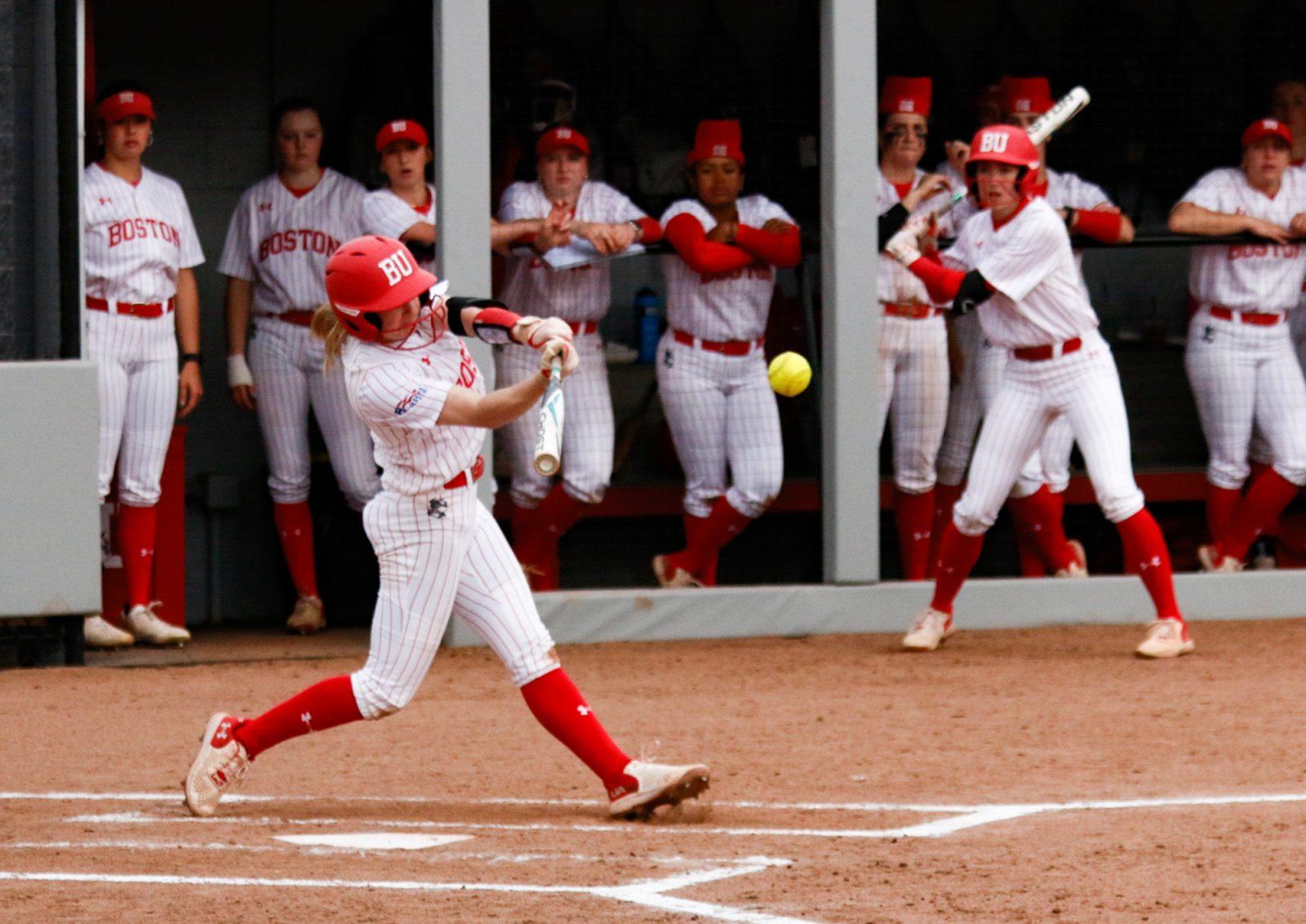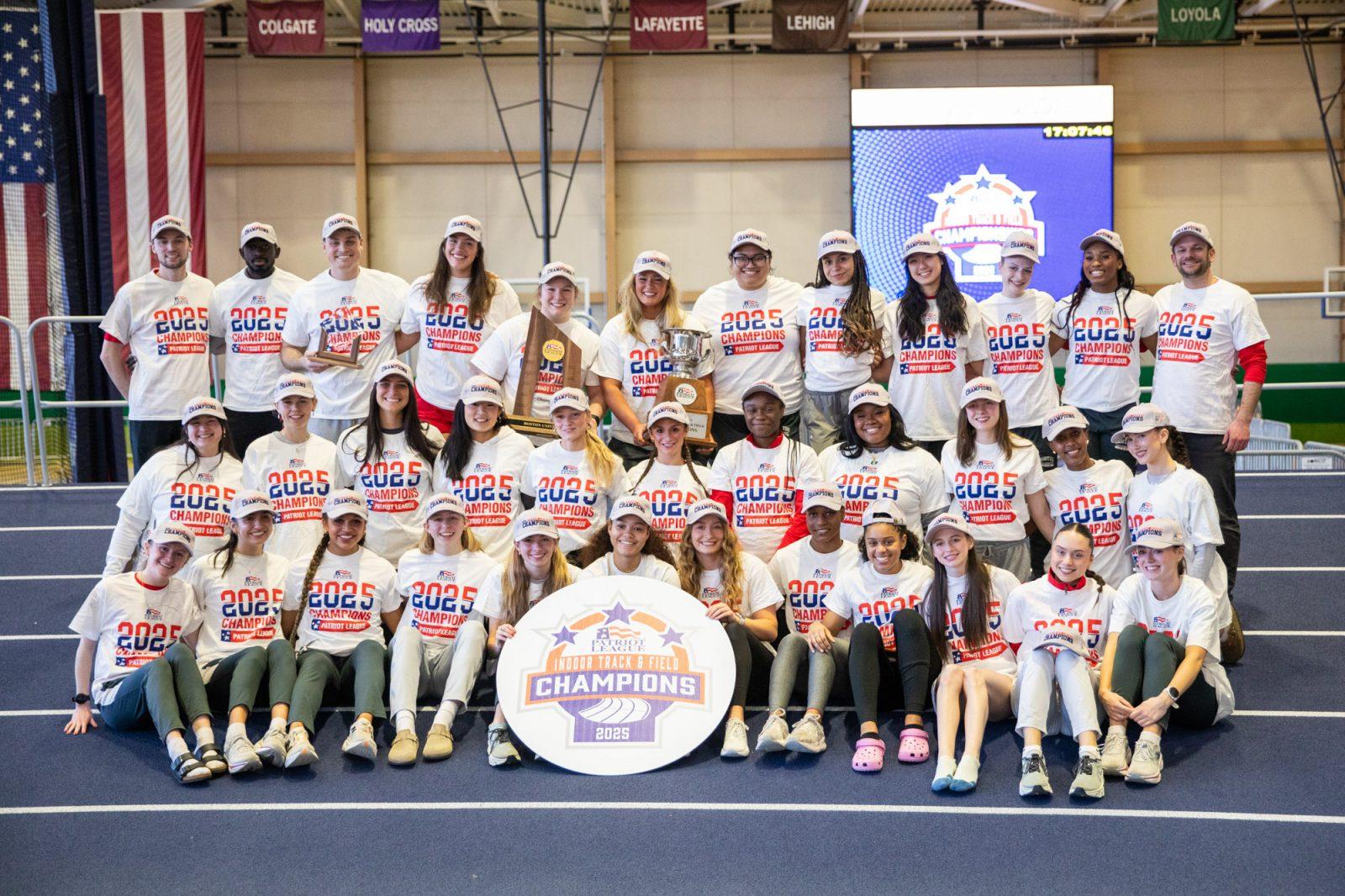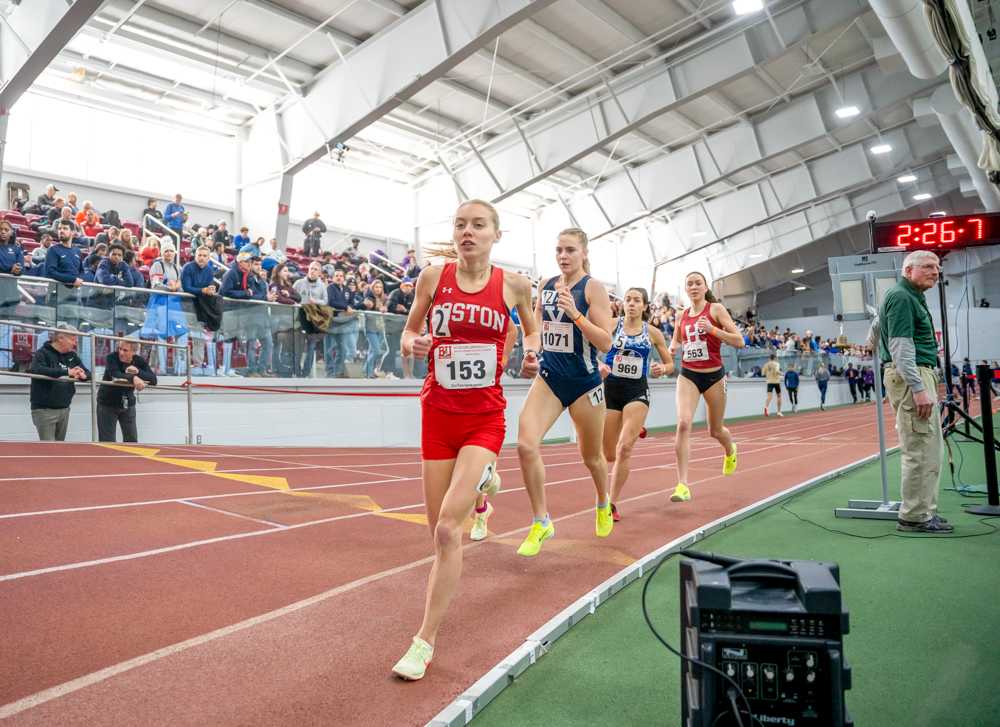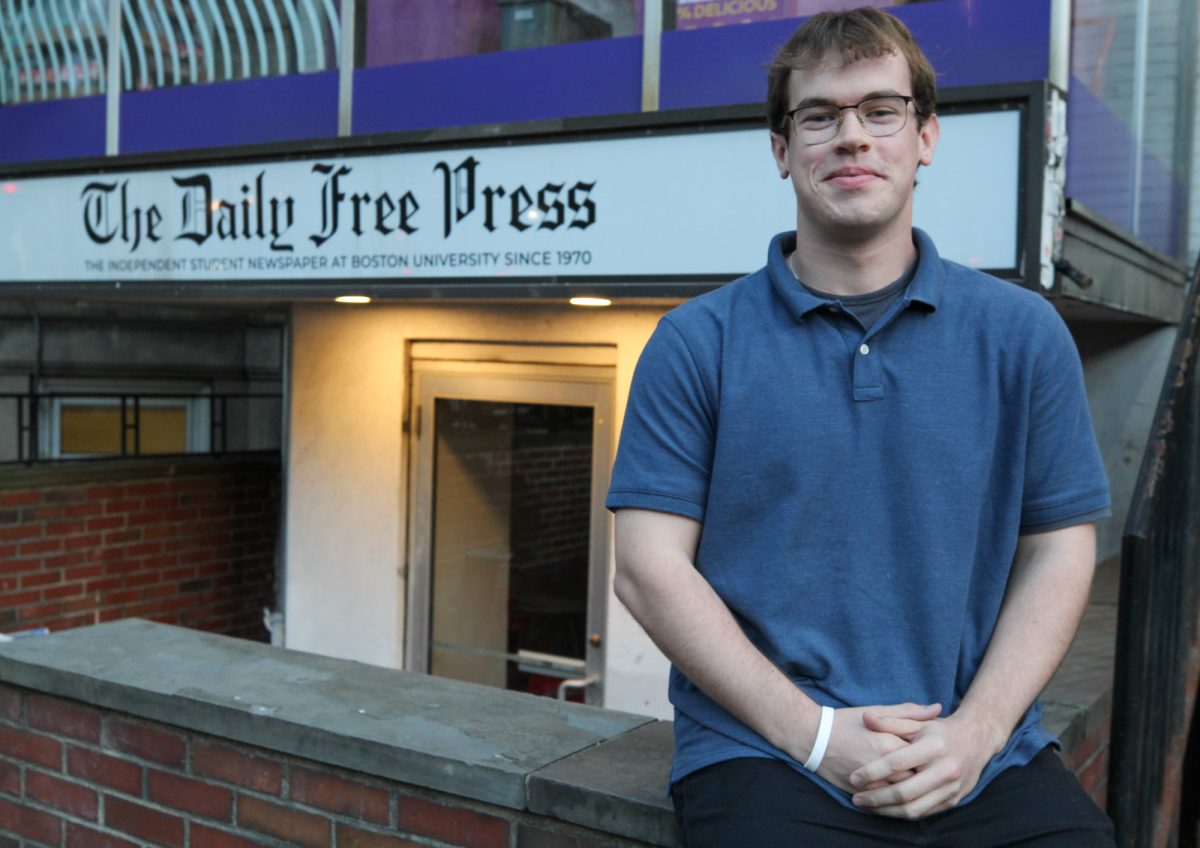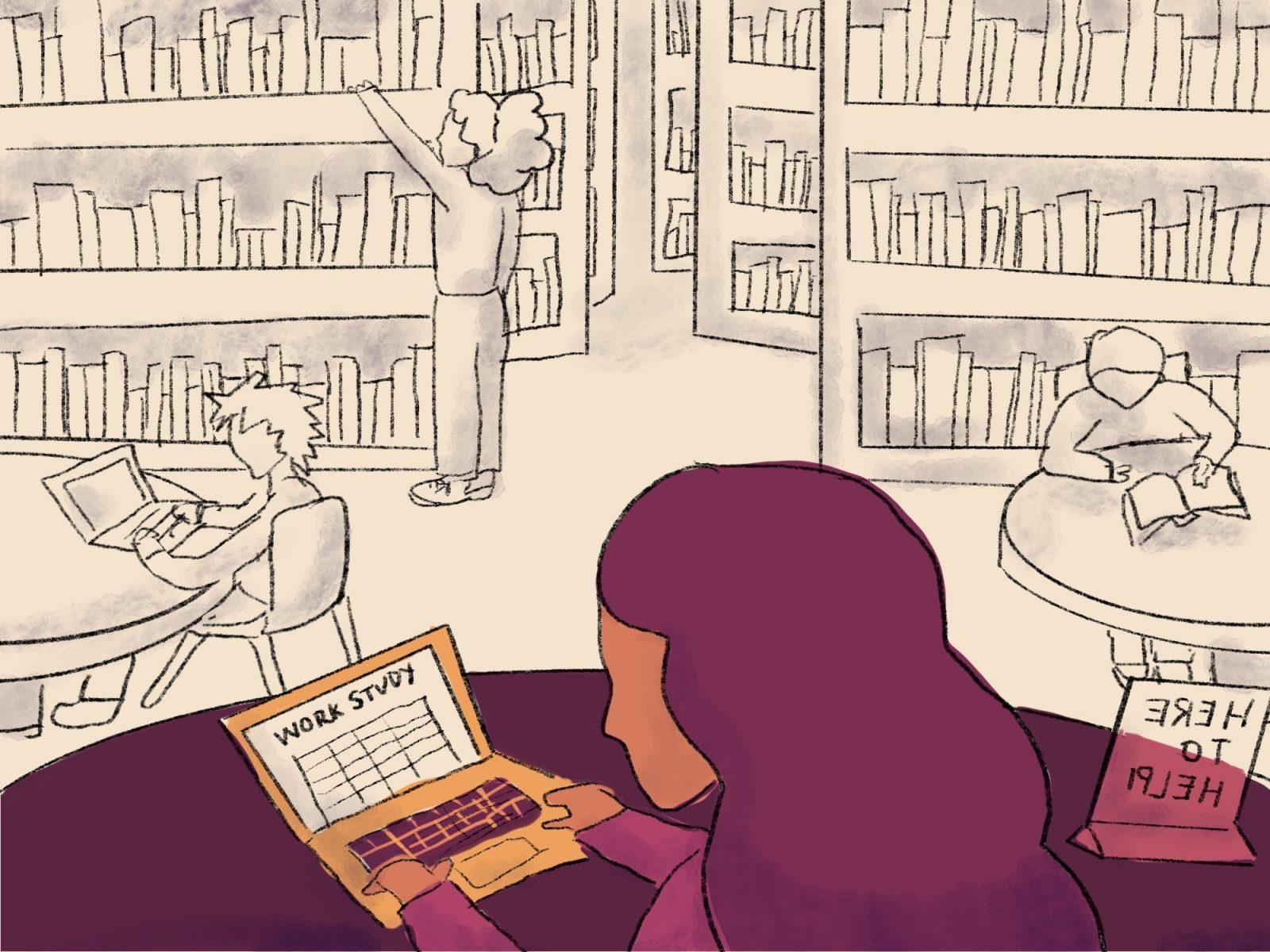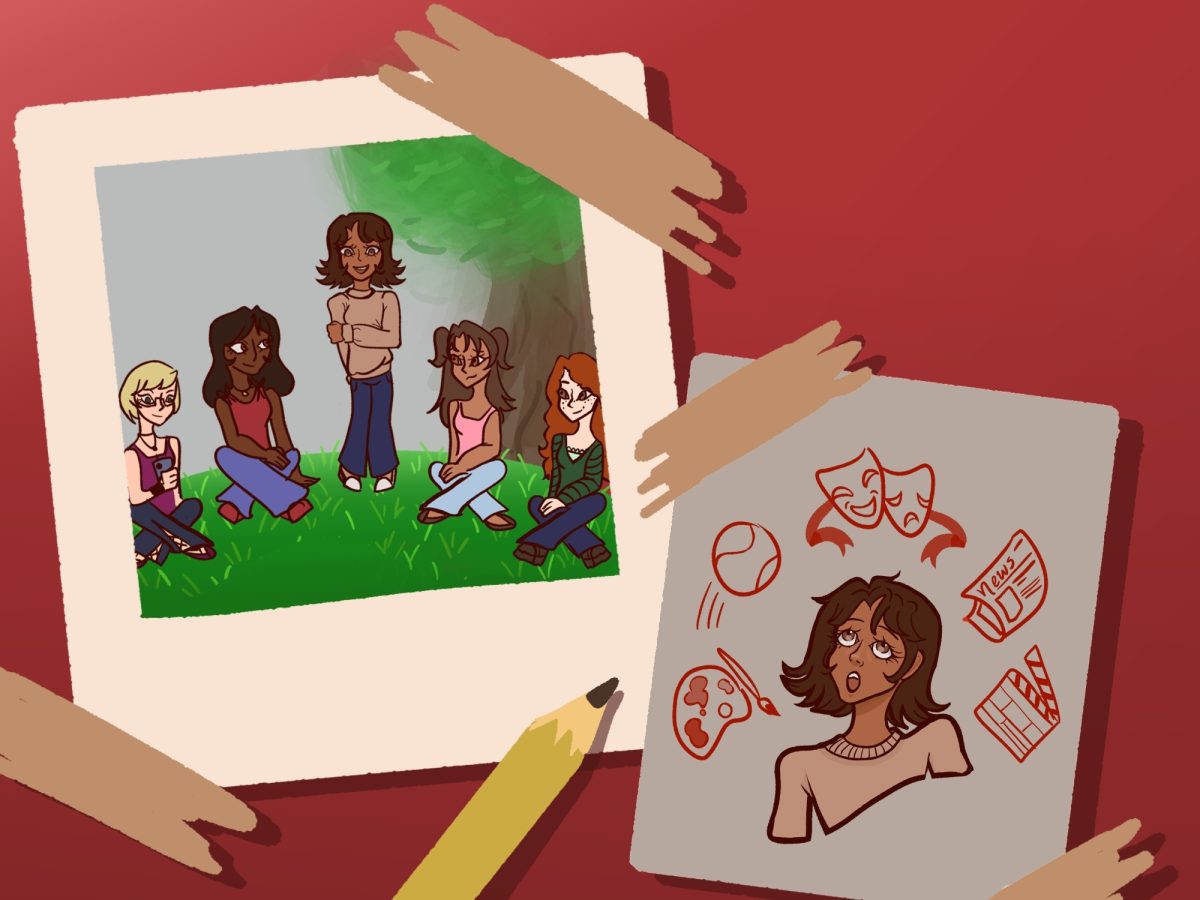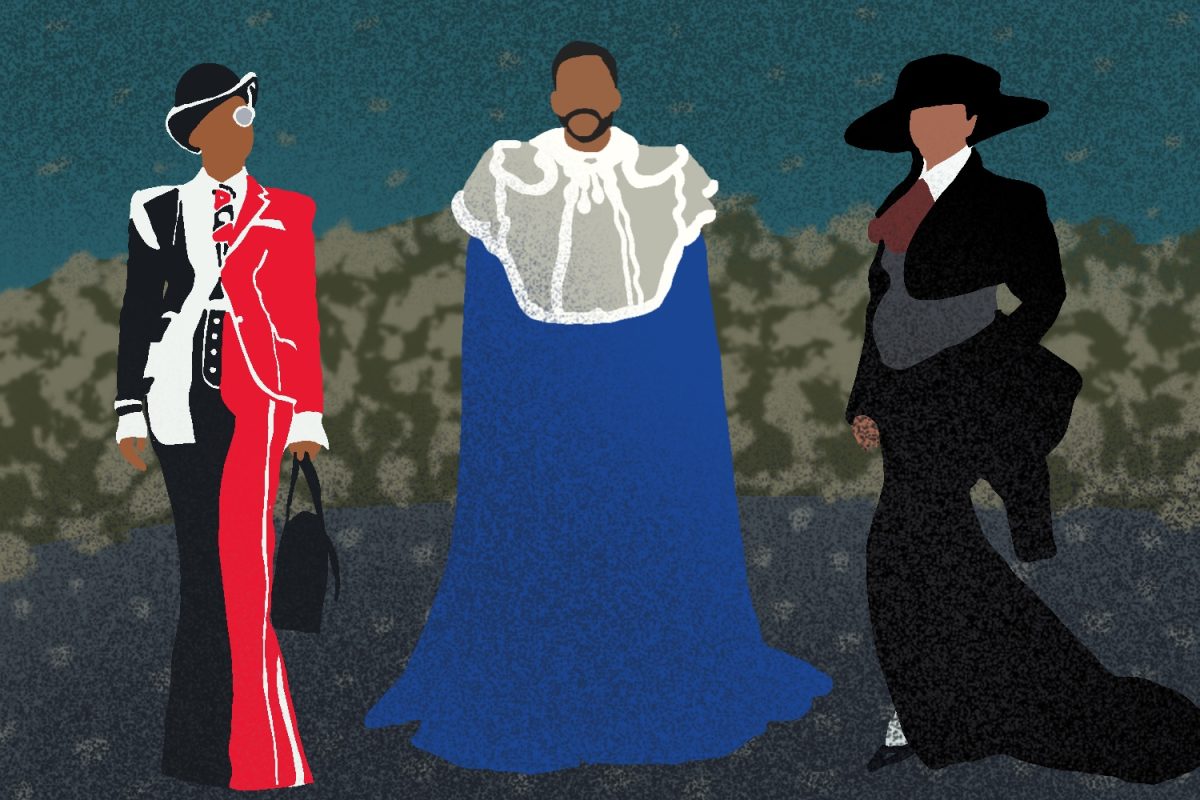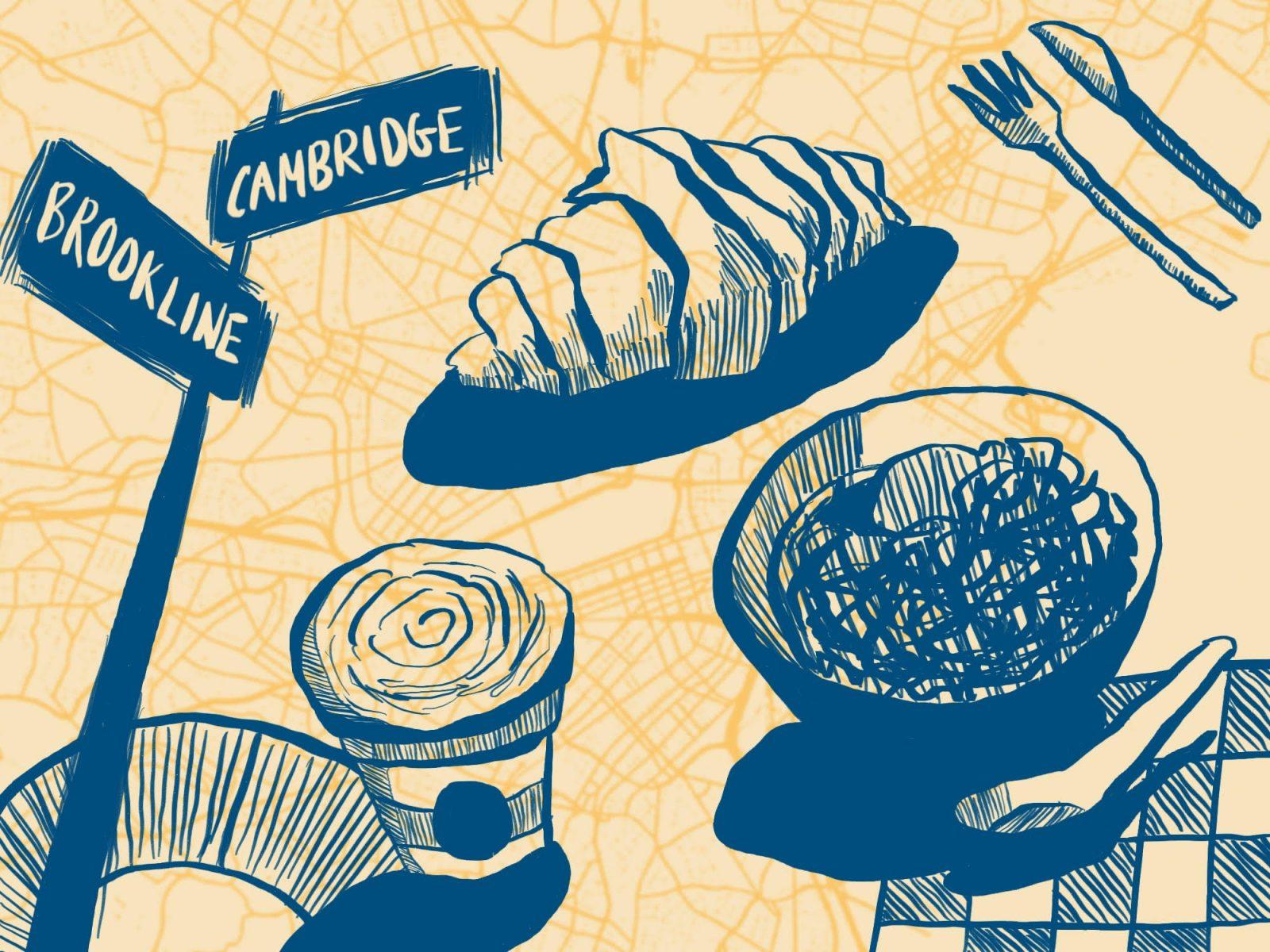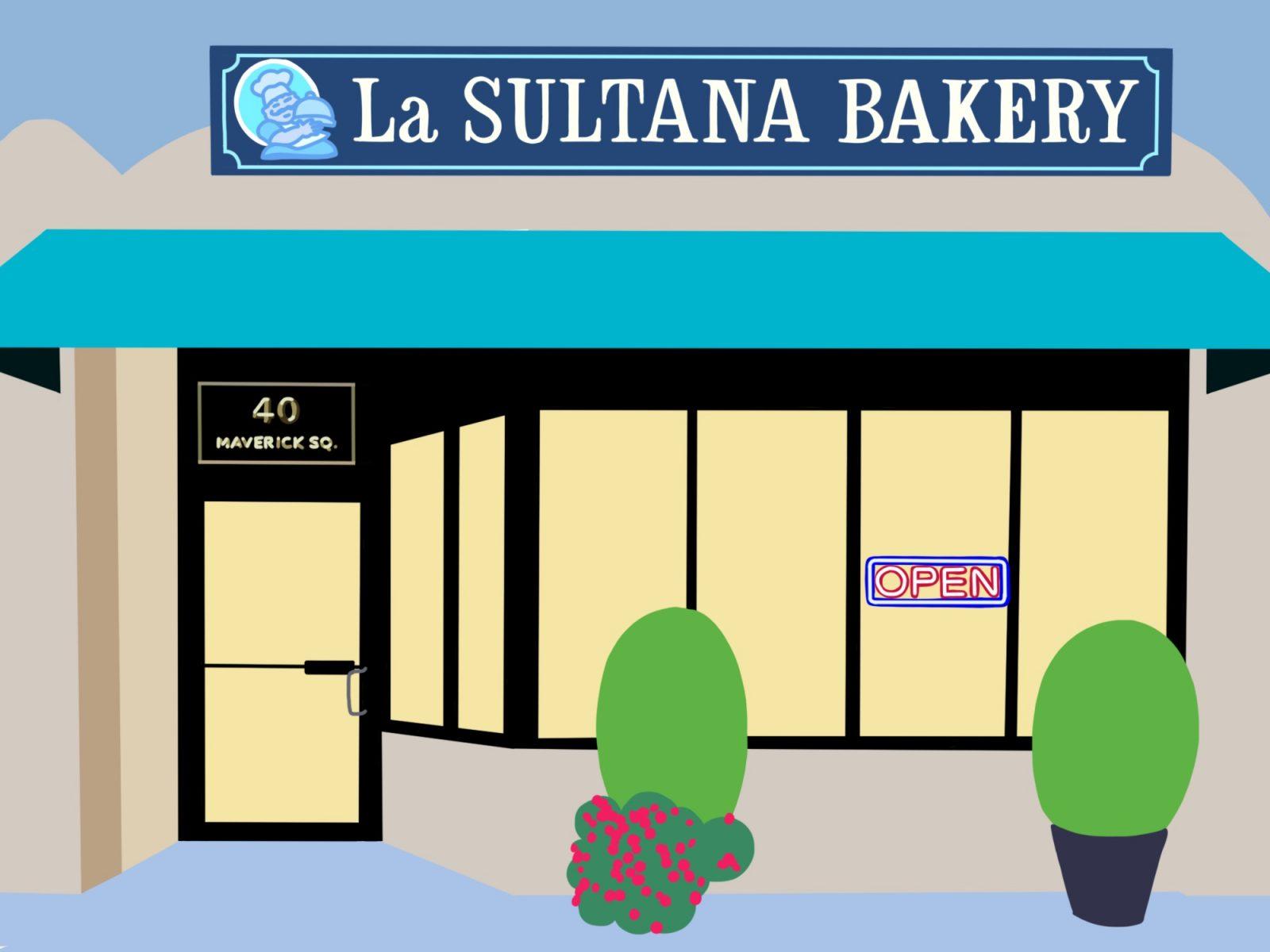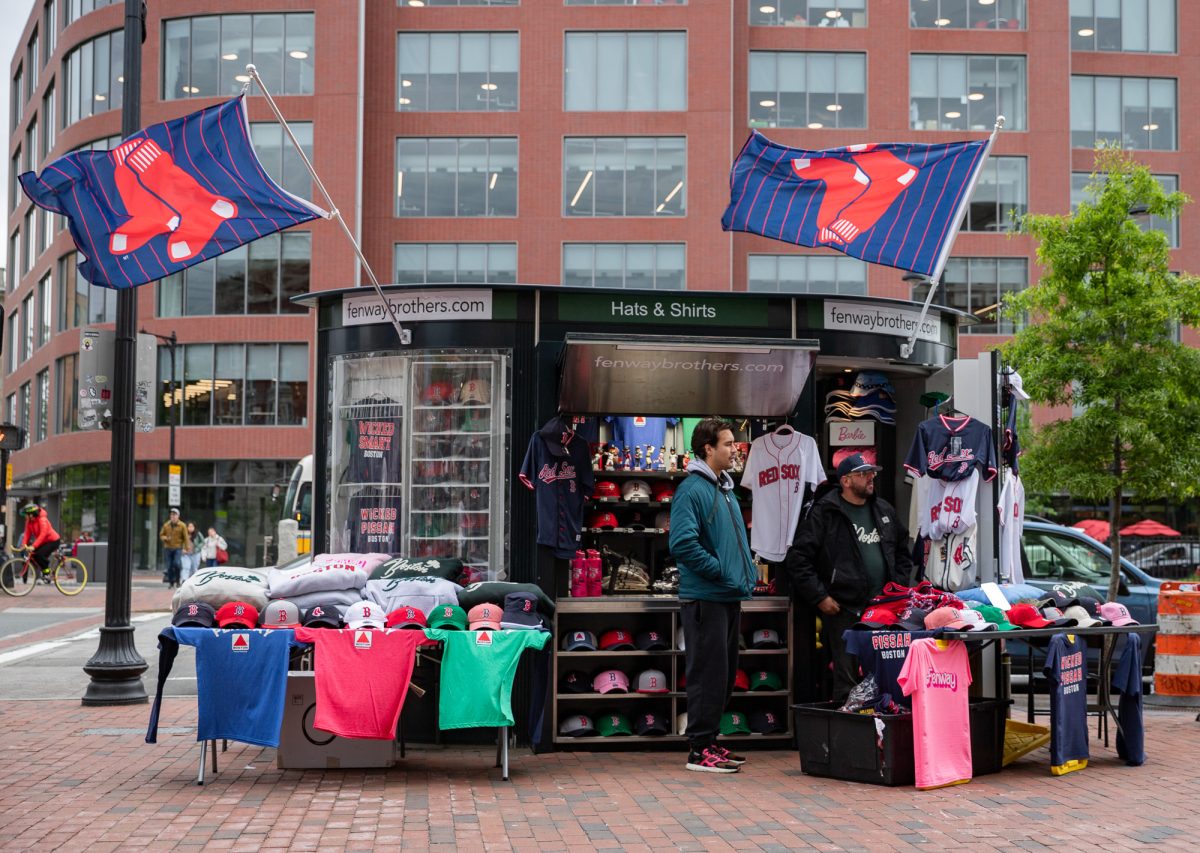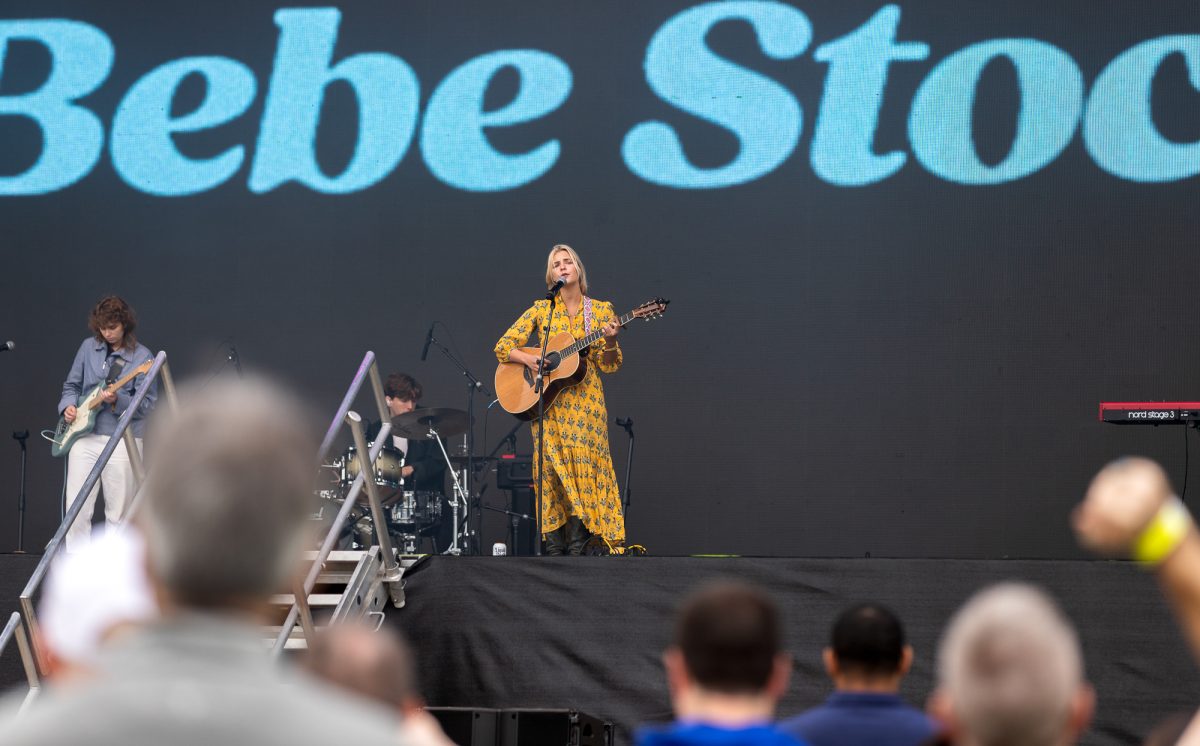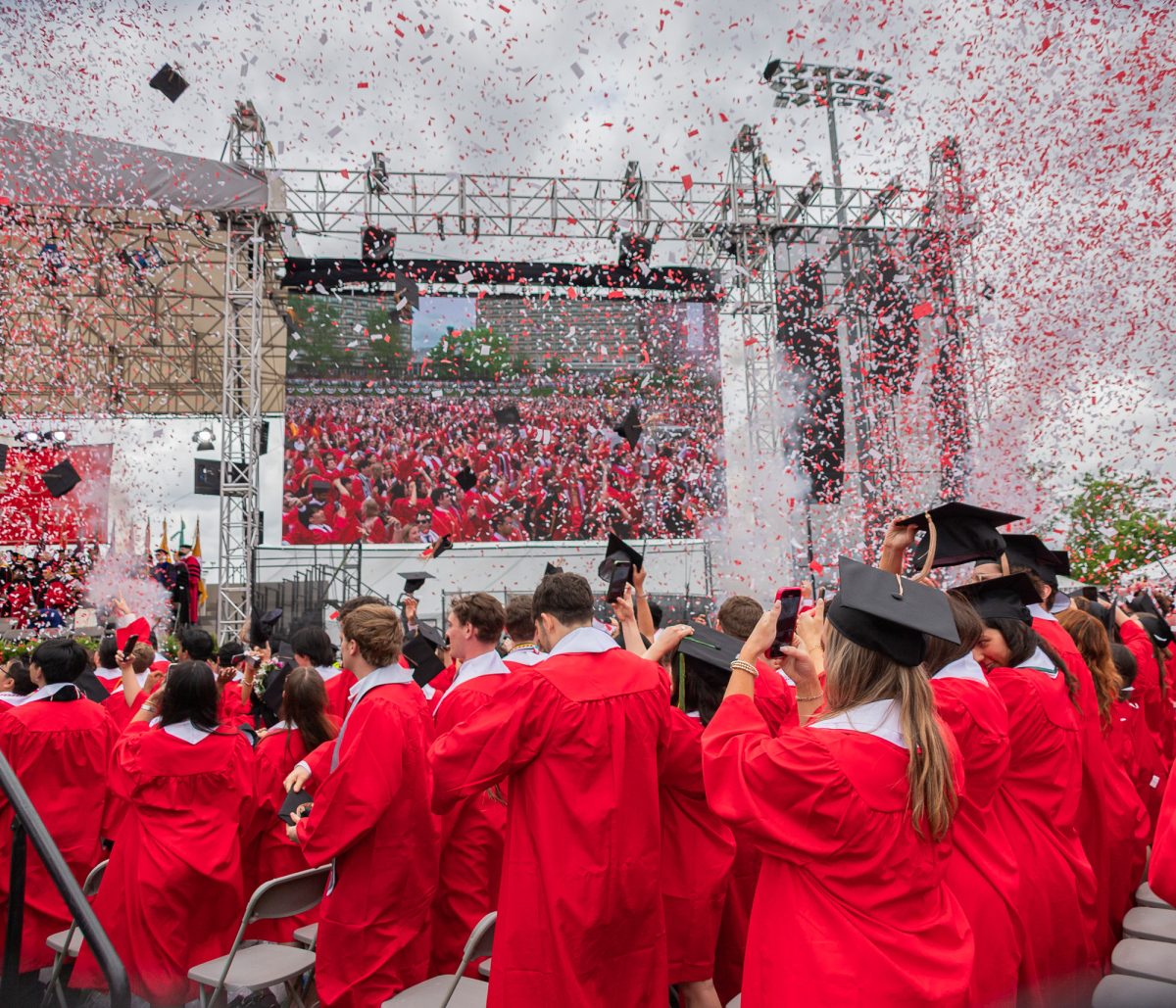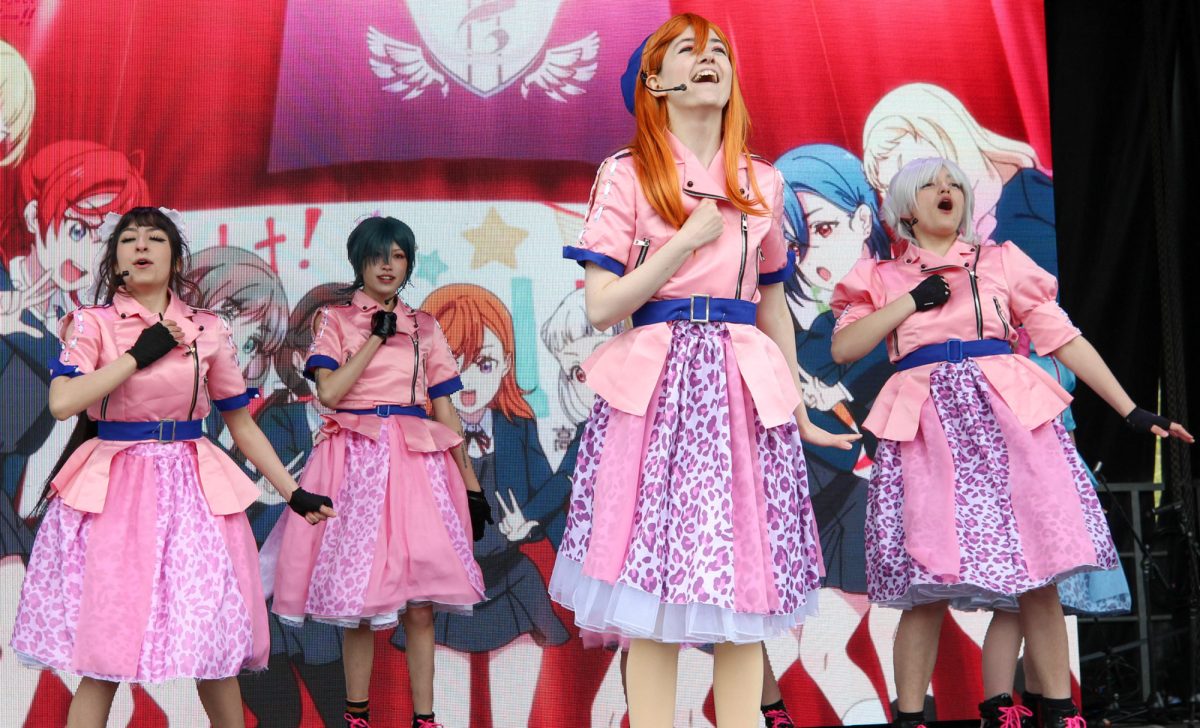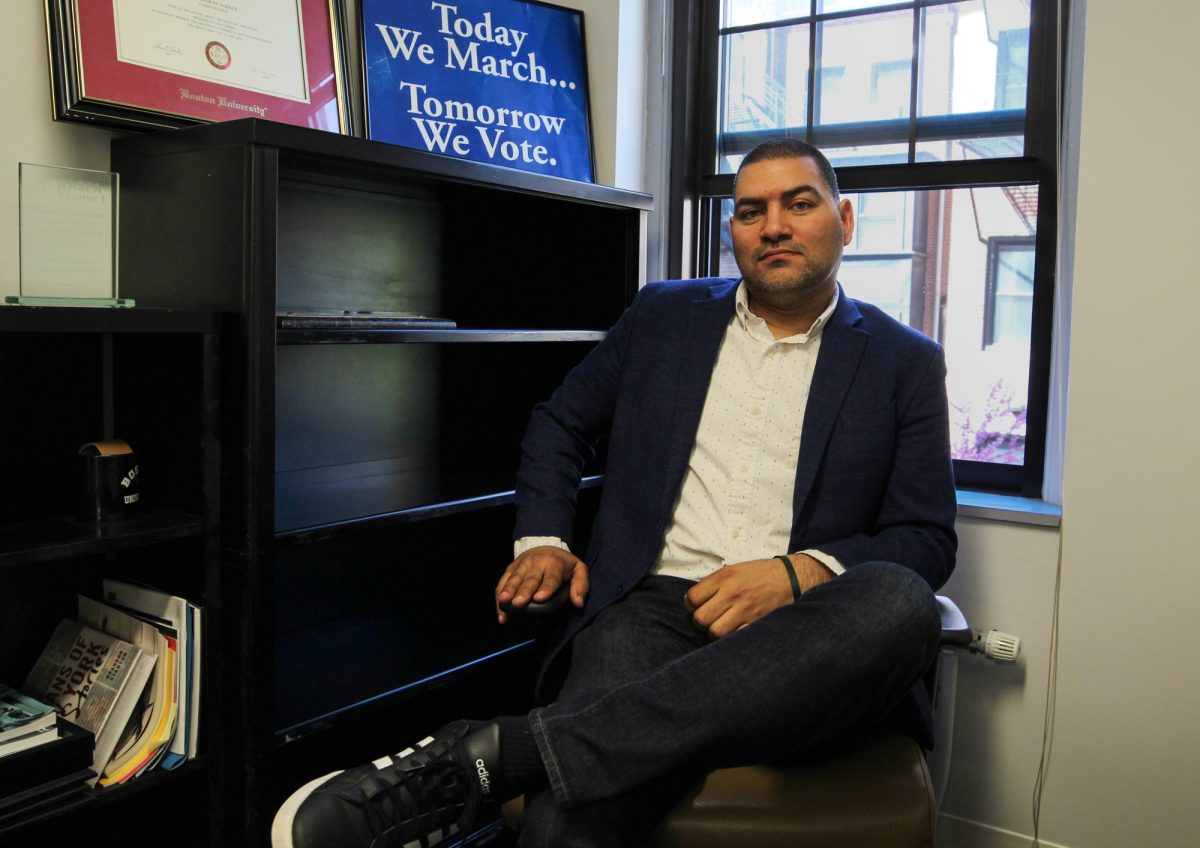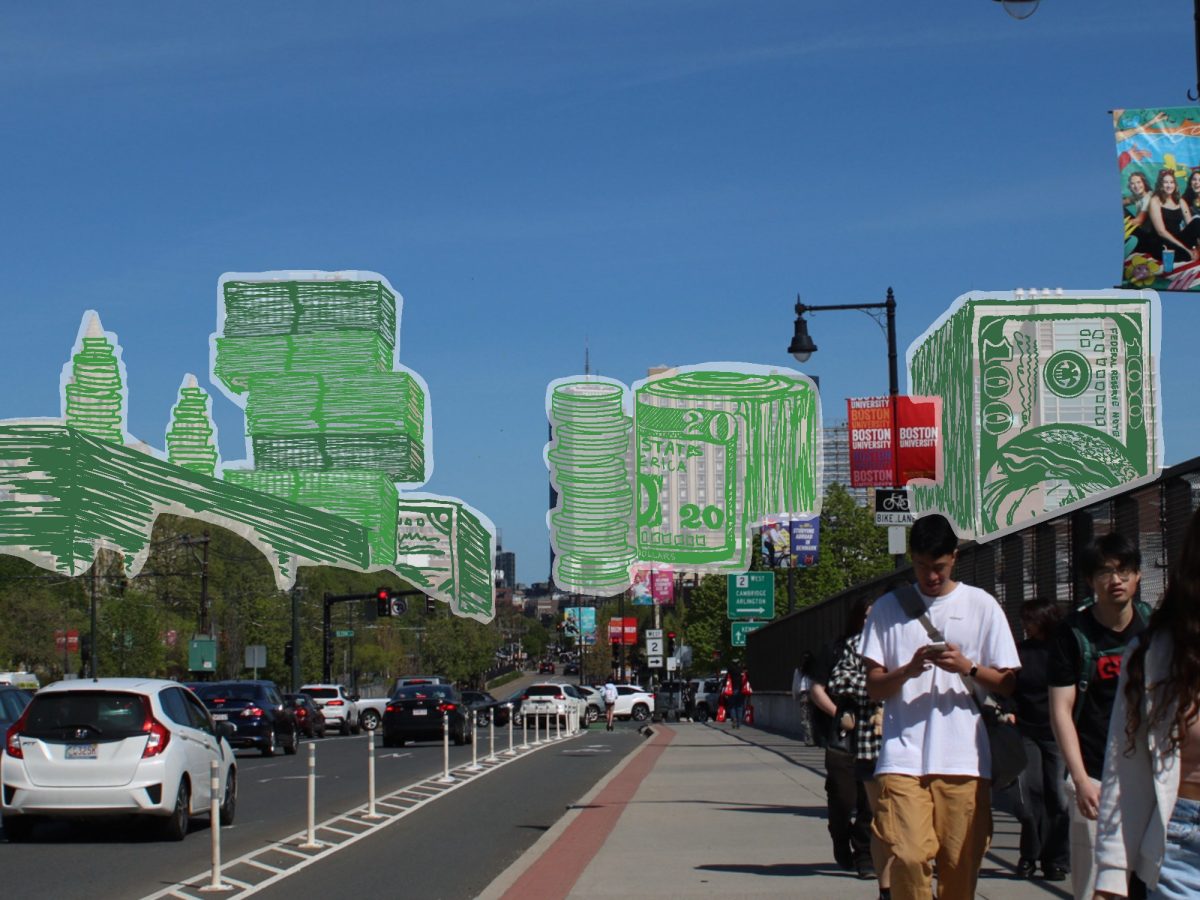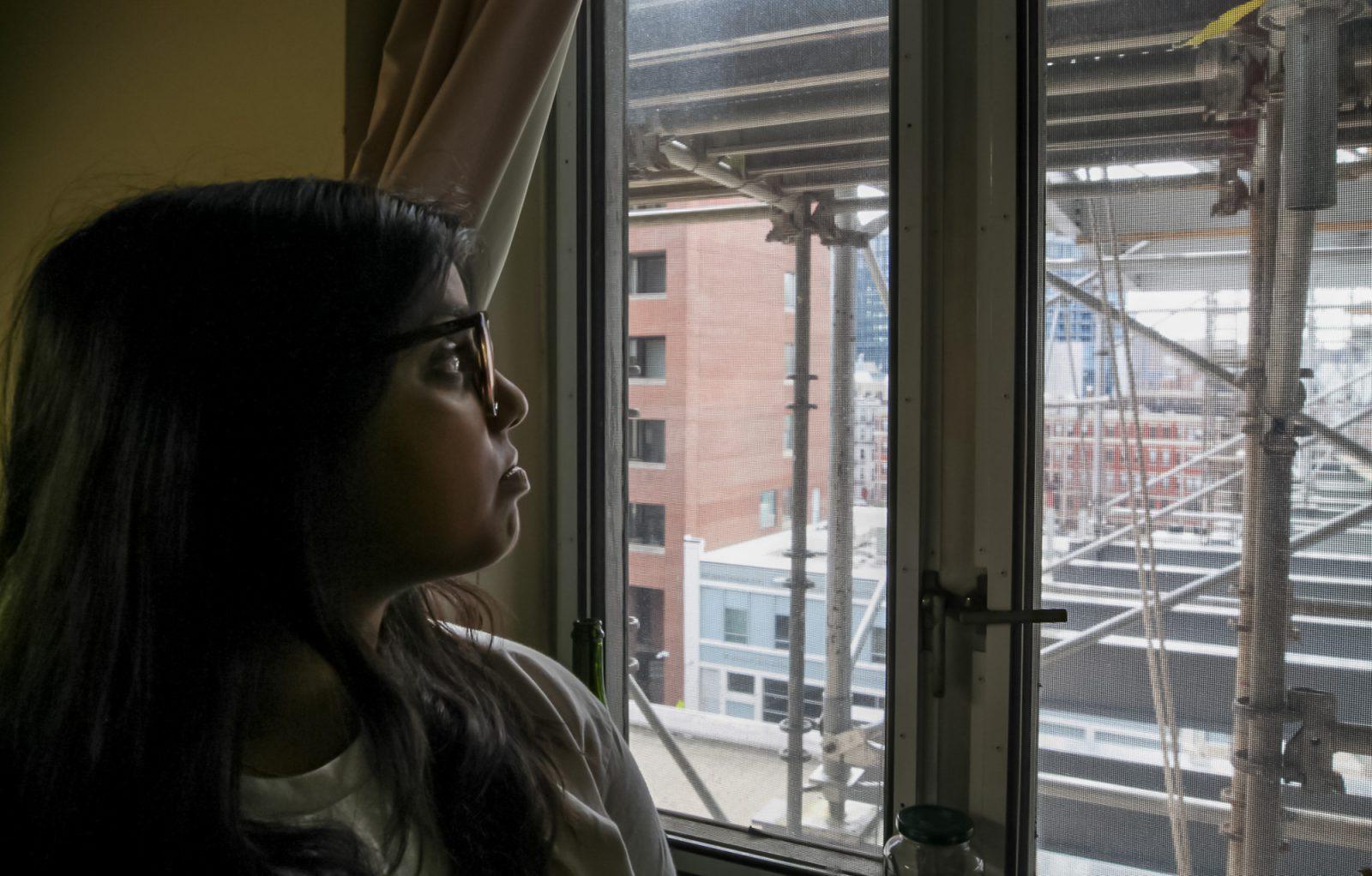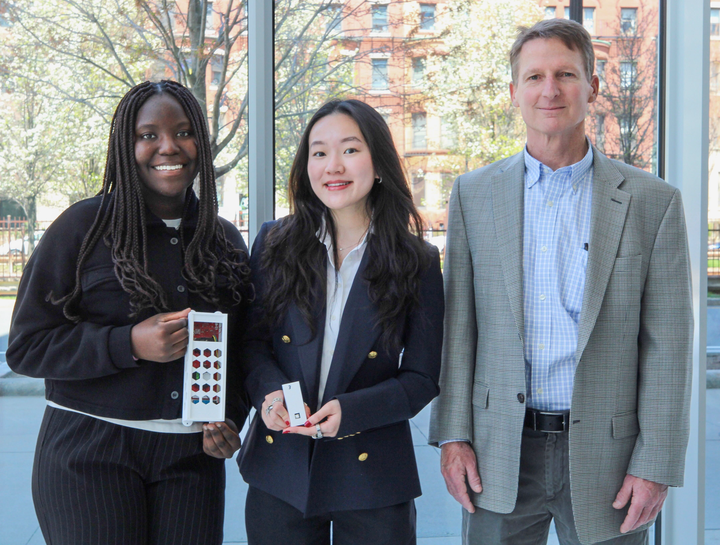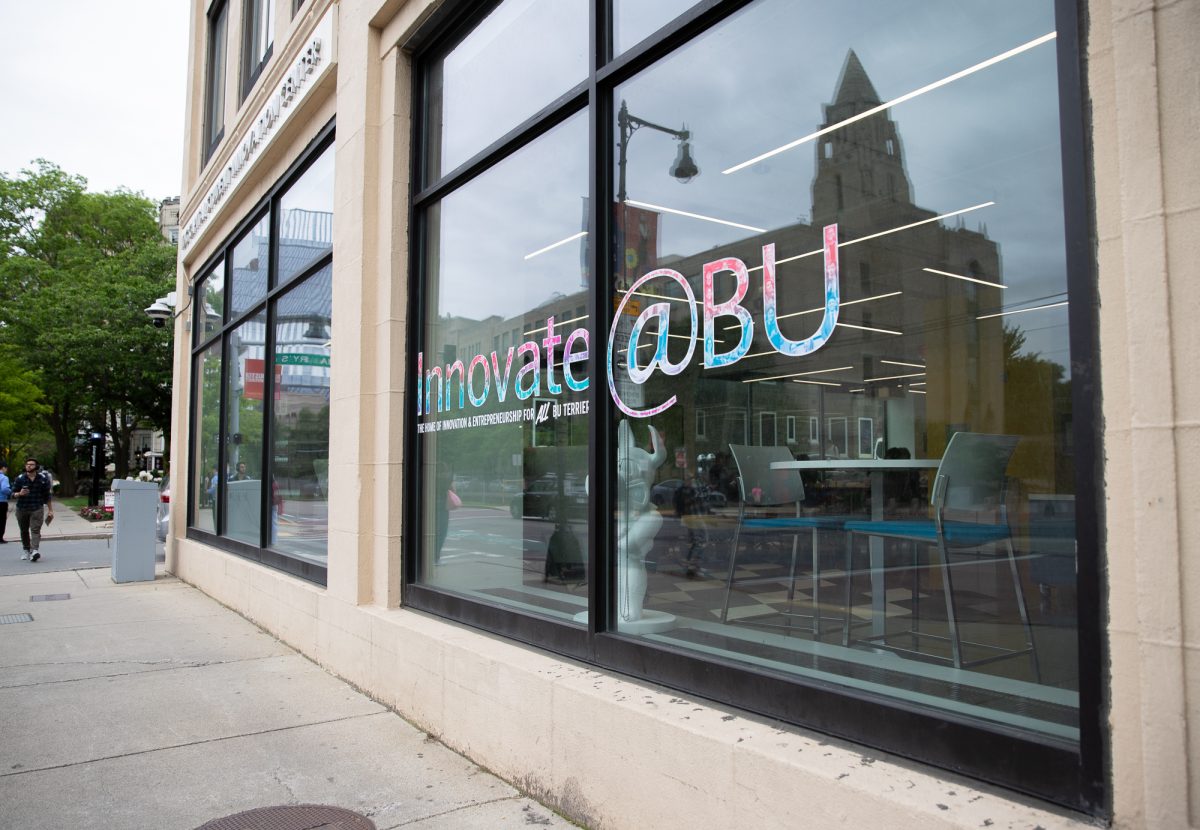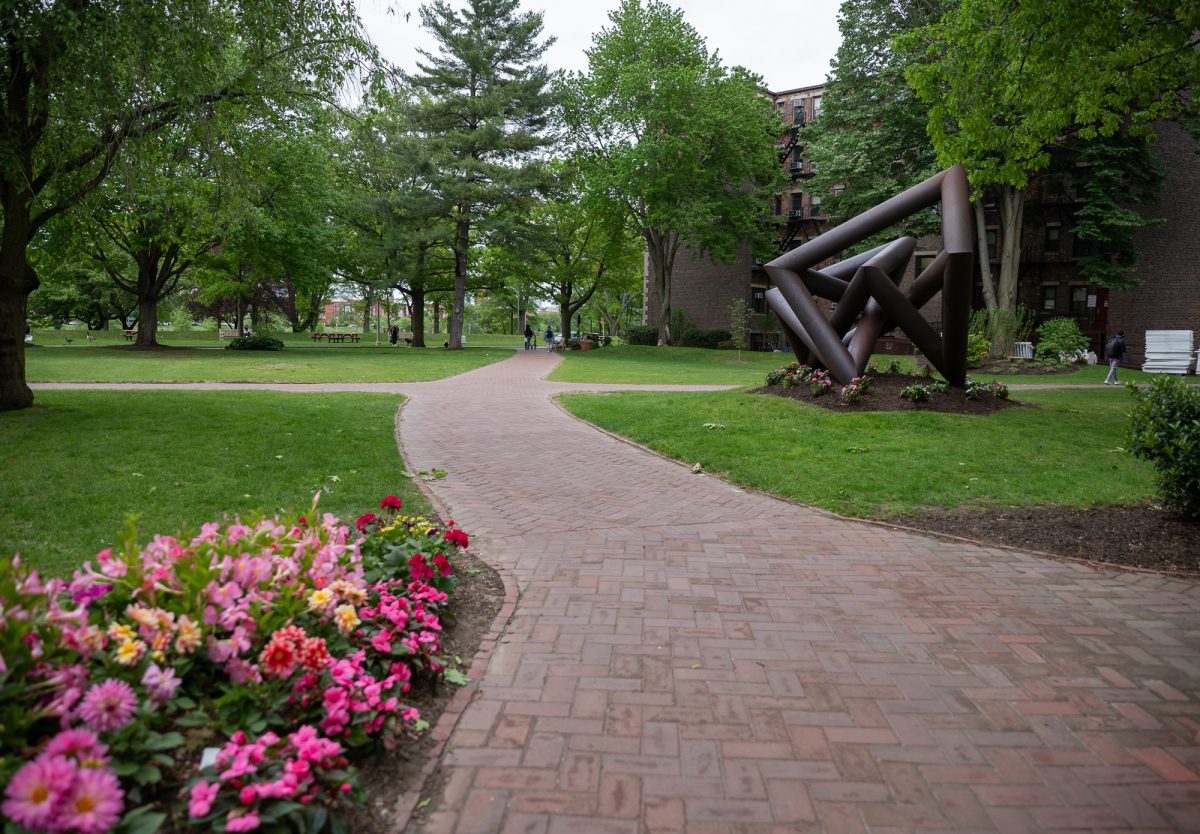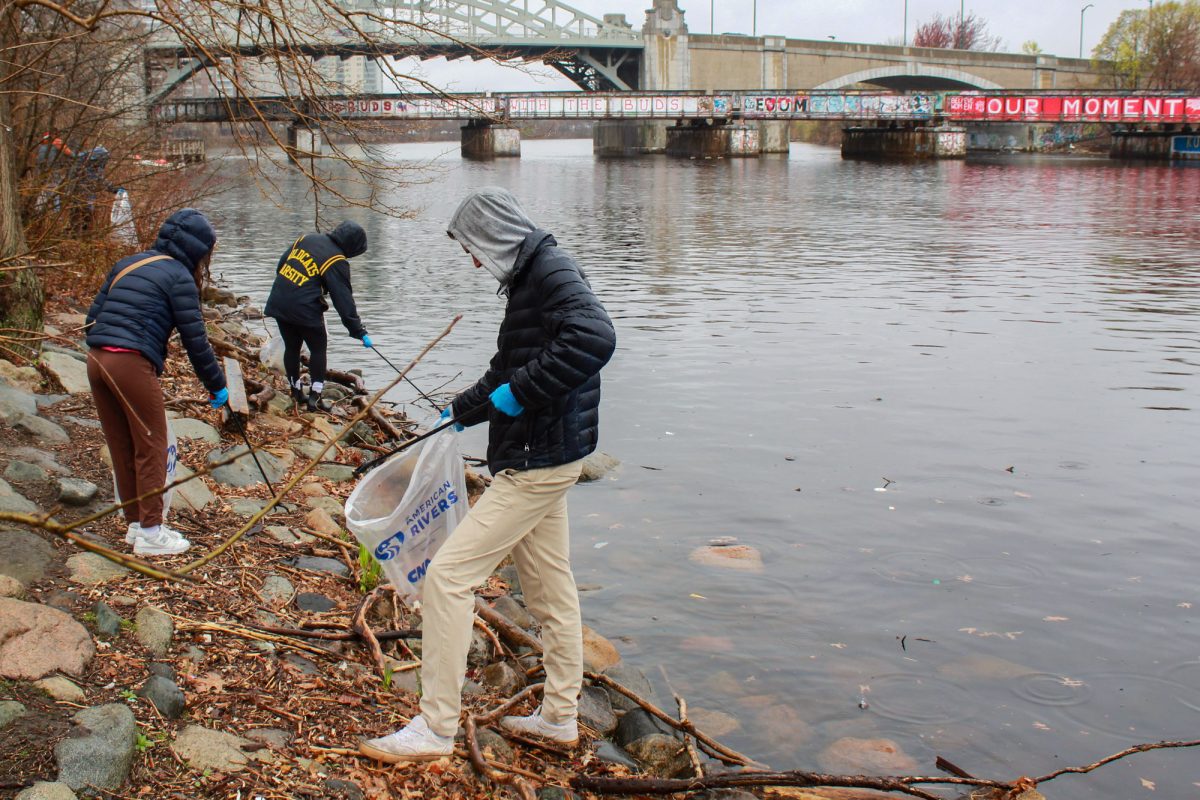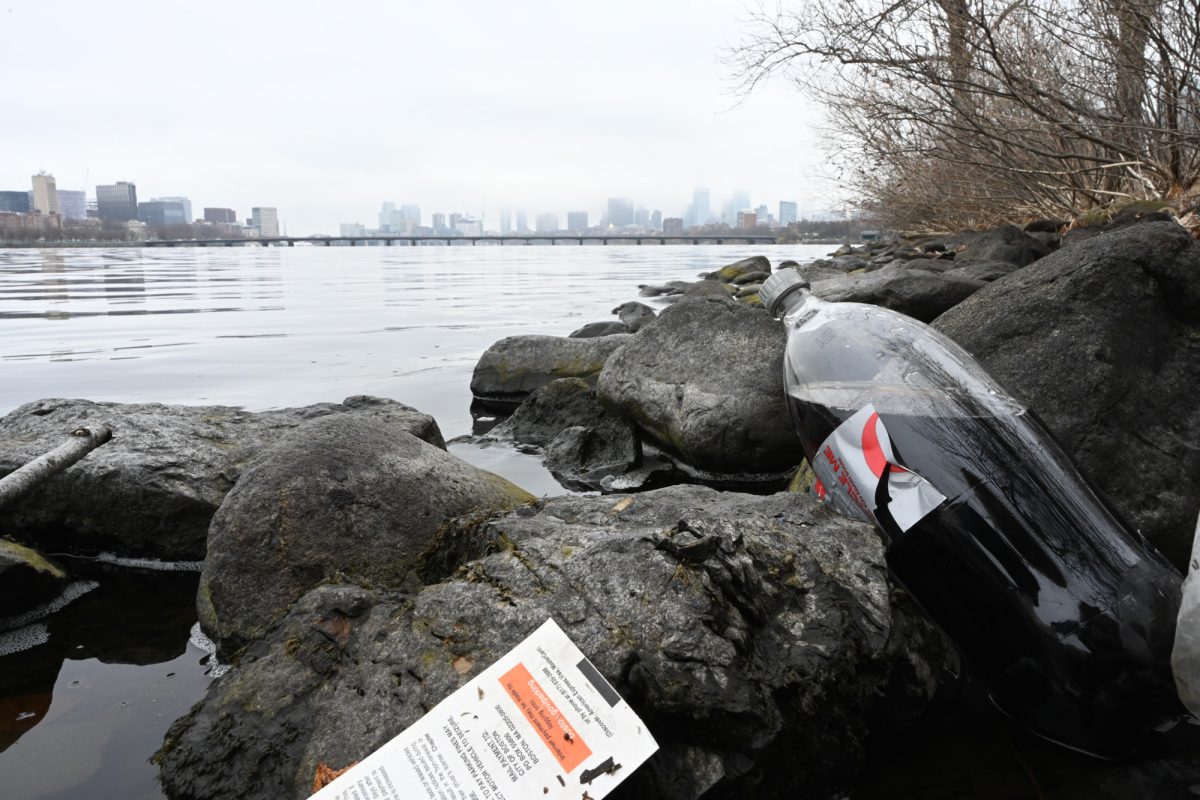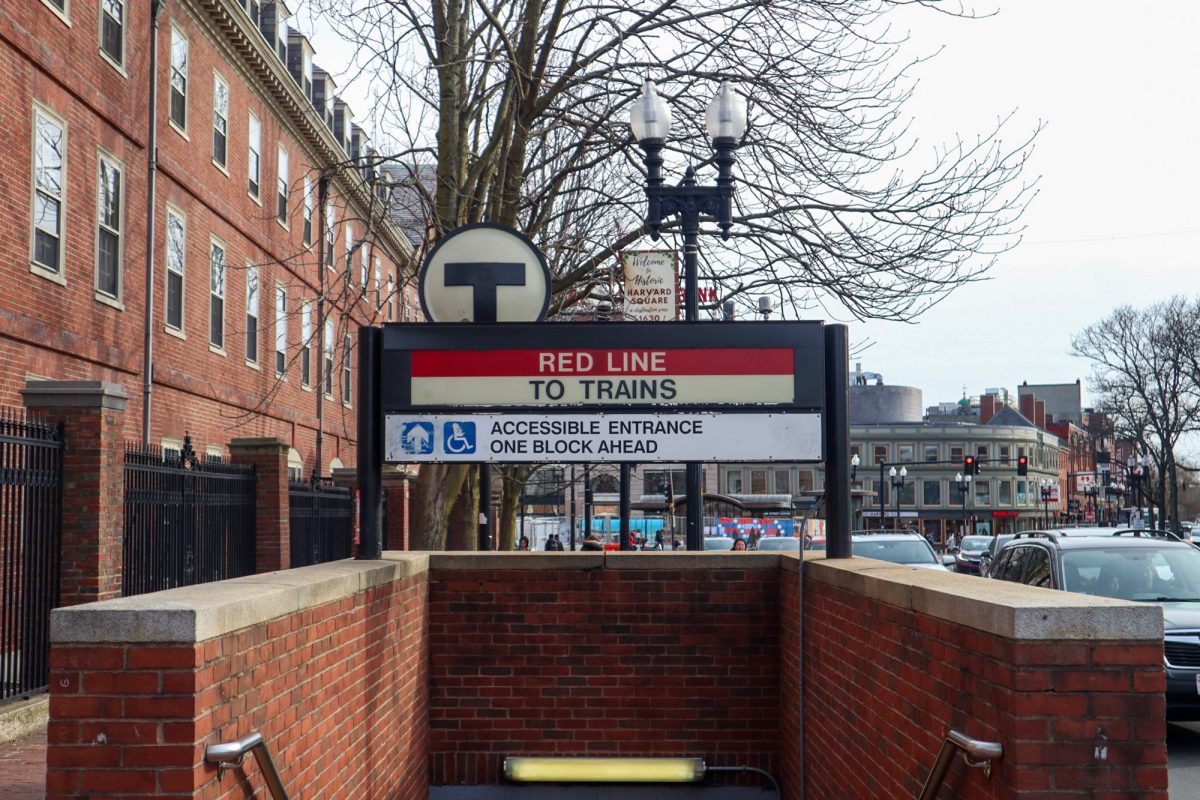As an urban university, Boston University can sometimes feel devoid of green space. A new 92-by-45-foot garden located east of the College of Fine Arts aims to change that.
However, the team behind the garden has a broader objective in mind— investigate the use of plants for artistic use, cultivate outdoor education and encourage sustainability at BU.
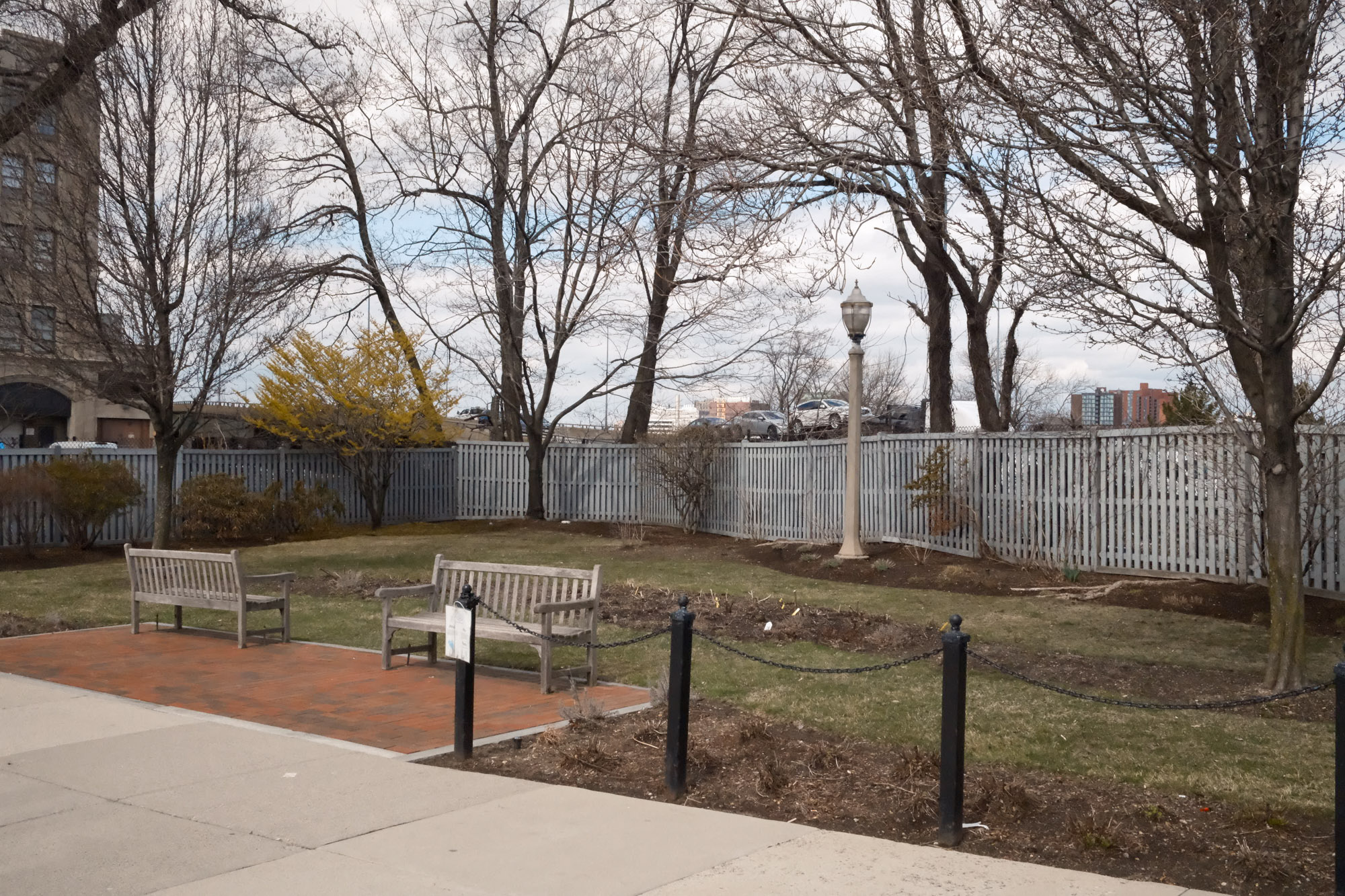
Dana Clancy, an associate art professor, said she mentioned the idea for a “color garden” to her students during a sustainable materials workshop in fall 2021, but it was the students who led the proposal.
“[The idea] was actually something a faculty member brought up to me,” she said. “She had a friend who [created] a pigment dye garden at another school, and I thought it was a good idea, so I talked about it with the students.”
Graduate CFA students Emily Manning-Mingle and Sohyoung Park drafted a proposal to the Campus Climate Lab for a community garden.
Lisa Tornatore, BU sustainability director, said she would characterize the garden as a unique proposal amid more concrete research projects.
“With the color garden, we were looking at something that was a little bit more intangible in terms of the benefit to the community,” she said.
The proposal was ultimately rejected because they needed either a water-adjacent space or raised beds, which they did not have the money to build, Clancy said.
Clancy said she was not deterred.
“I had learned from my job, teaching, that sometimes things take time,” she noted.
In fall 2023, she noticed through discussions in her seminar class that two of her students, seniors at the CFA School of Visual Arts, Lauren Boysa and Anthony Venturi, were interested in incorporating natural elements, like plants and landscapes, into their art, she said.
“Both of us have been interested in depicting and representing the environment throughout our college career,” Boysa said. “It’s something that recurred again and again in our artistic statements and questions we asked for the class.”
Clancy said she approached them with the idea of taking another shot at making the color garden a reality.
Over the course of two years, Boysa and Venturi, along with CFA seniors Natalie Seitz, Arielle Shultz and Julia Cheung met weekly to plan out what designs, plants and events to implement into this project.
While designing the garden, Boysa said the group wanted the garden to be “fluid,” meaning that it has potential to change and develop over time.
The design started with two large trees in the center of the garden that, over time, positioned themselves to receive the maximum amount of sunshine possible, forming an oblong oval shape, she said.
Based on the trees’ drip line, or the outermost part of the tree where water drips down from, they decided on a triangular shape for the garden, Boysa said.
“Our imagination for this shape is [that] we wanted to have paths … to invite people to walk through it,” Boysa said.
This shape is not permanent, she said.
“Early in the spring this year, we’re adding an additional little patch, so that goes back to the idea that this is fluid,” Boysa said. “A fluid garden is not fixed, like so many spaces in the city. So in that way, it’s different as well.”
Clancy said the group also received help from her husband, an architect, who provided many of the tools needed to measure a plot of land to create a working design.
Creating the garden was intimidating but exciting, Boysa said.
“It feels like we’re doing so much, and as we have begun to pass down responsibilities to younger classmates and students that is more and more apparent,” she noted. “It just feels so wonderful to have sort of literally broken ground on something so special.”
It also came with a fair amount of surprises. Right after opening day, rabbits ate the flowers students just planted.
“Just like being an artist, you make plans. You really have to adapt to the conditions,” Clancy said.
The garden officially opened on Earth Day last year when they planted the first flowers in the garden.
Clancy said those who helped plant the flowers at the reception seemed curious about what the color garden was all about.
“That’s what artists can do. We can engage people to be curious, to slow down, to do something different than they normally do,” she said.
Since its opening, the garden has hosted different events to showcase the garden and its purpose.
For example, they held a DIY dyeing workshop, which had participants dip fabric squares in vats of plant pigment or try to paint with dye made from garden flowers — Boysa said she has used that process for her own paintings.
Boysa added it is lovely to see people use the garden as a community space.
“It’s so rewarding to walk by and see people enjoying the space, eating there, just sitting reading a book on the bench [or] having their dog walk around in the garden,” she said.
Next year, Eleanor Bernard, a junior in CFA, will be one of the students leading the garden once the seniors graduate.
While nothing is set in stone, she said, she looks forward to maintaining and expanding a community within the garden — whether by making the group an official club or by collaborating with environmental clubs or departments at BU.
“The future of the garden is just to continue to create community,” said Bernard.
As Boysa prepares to graduate, she said the future is bright for the garden.
“I’m hoping it’s headed in the direction for a highlight of BU sustainability … and engagement with the arts,” Boysa said.

